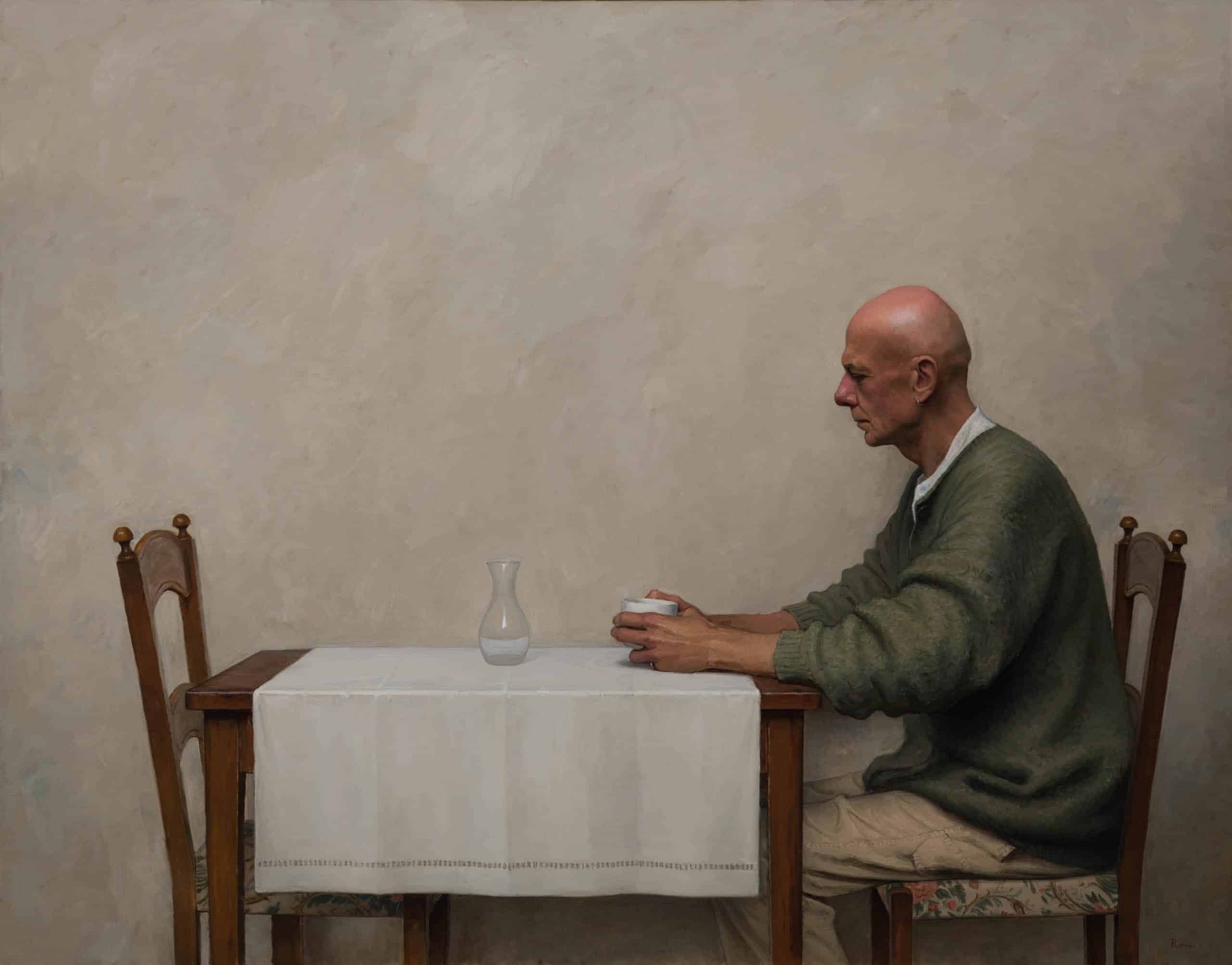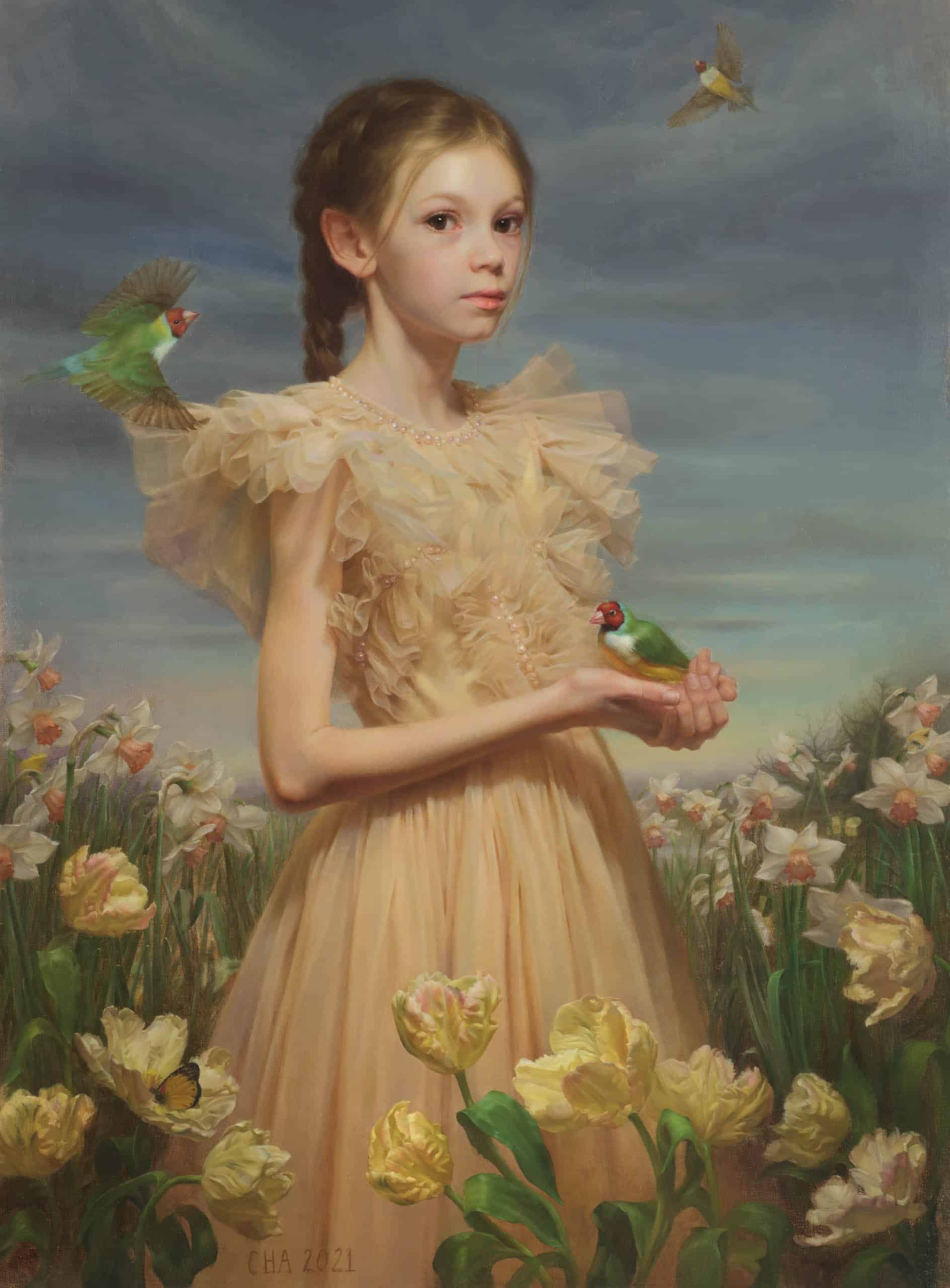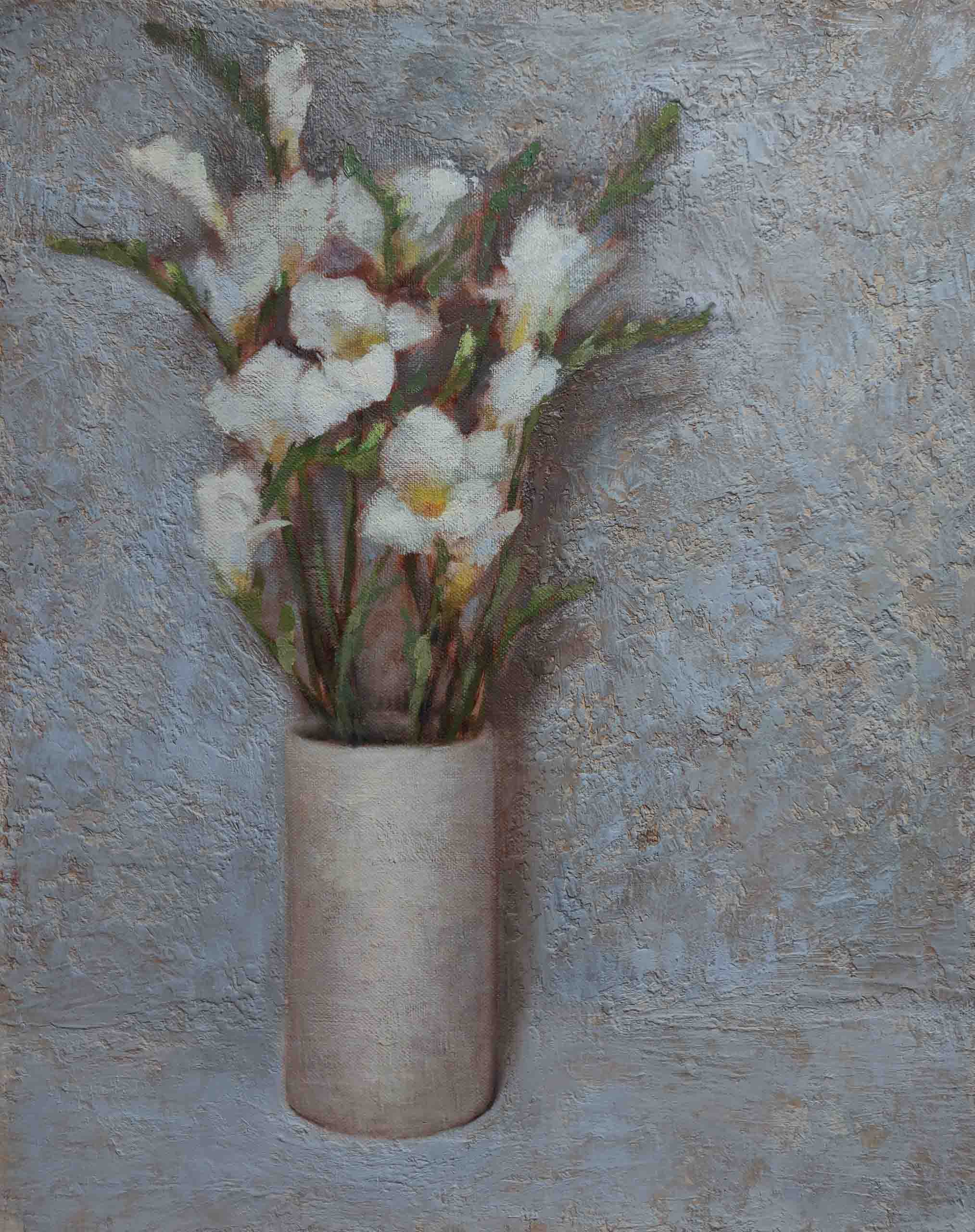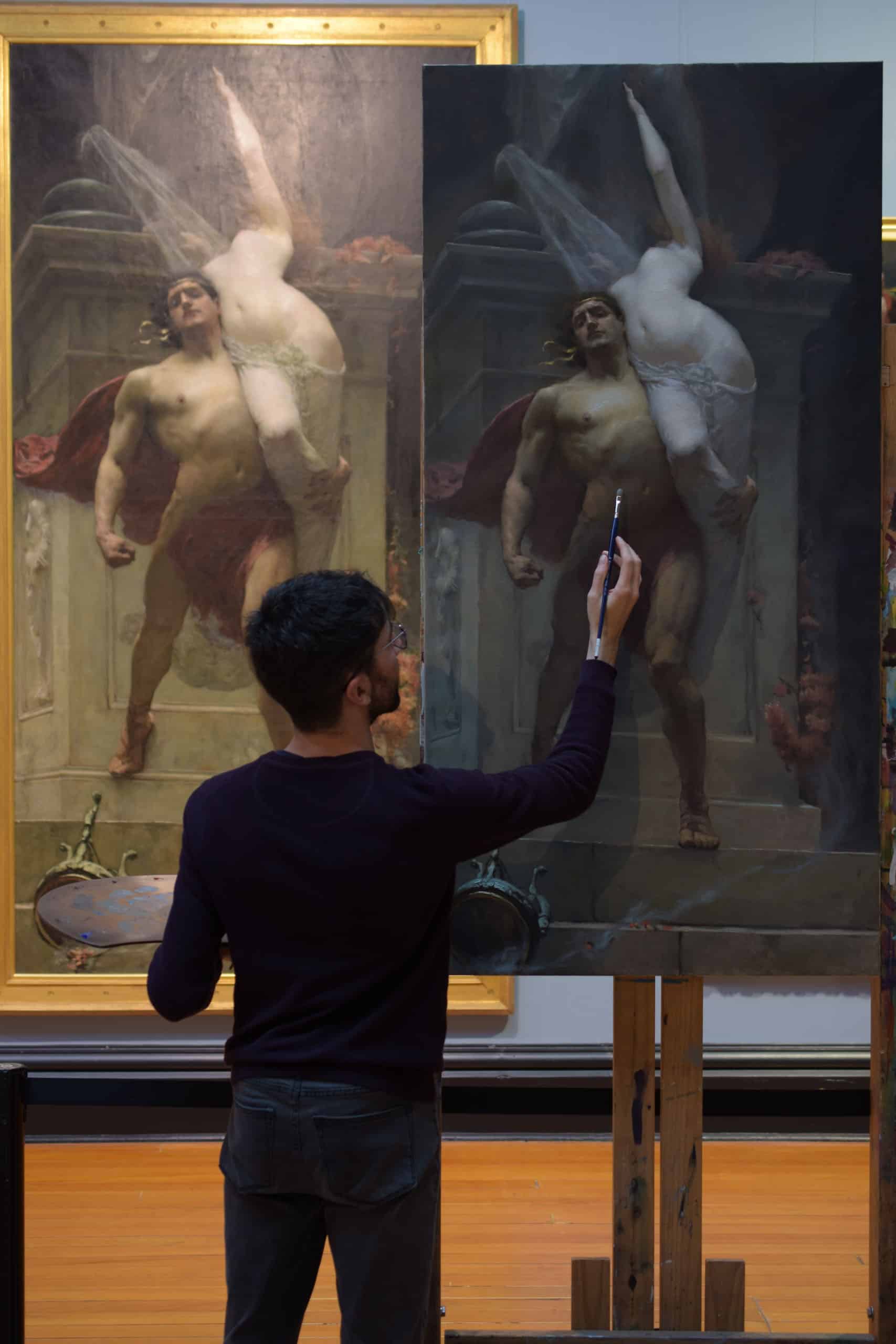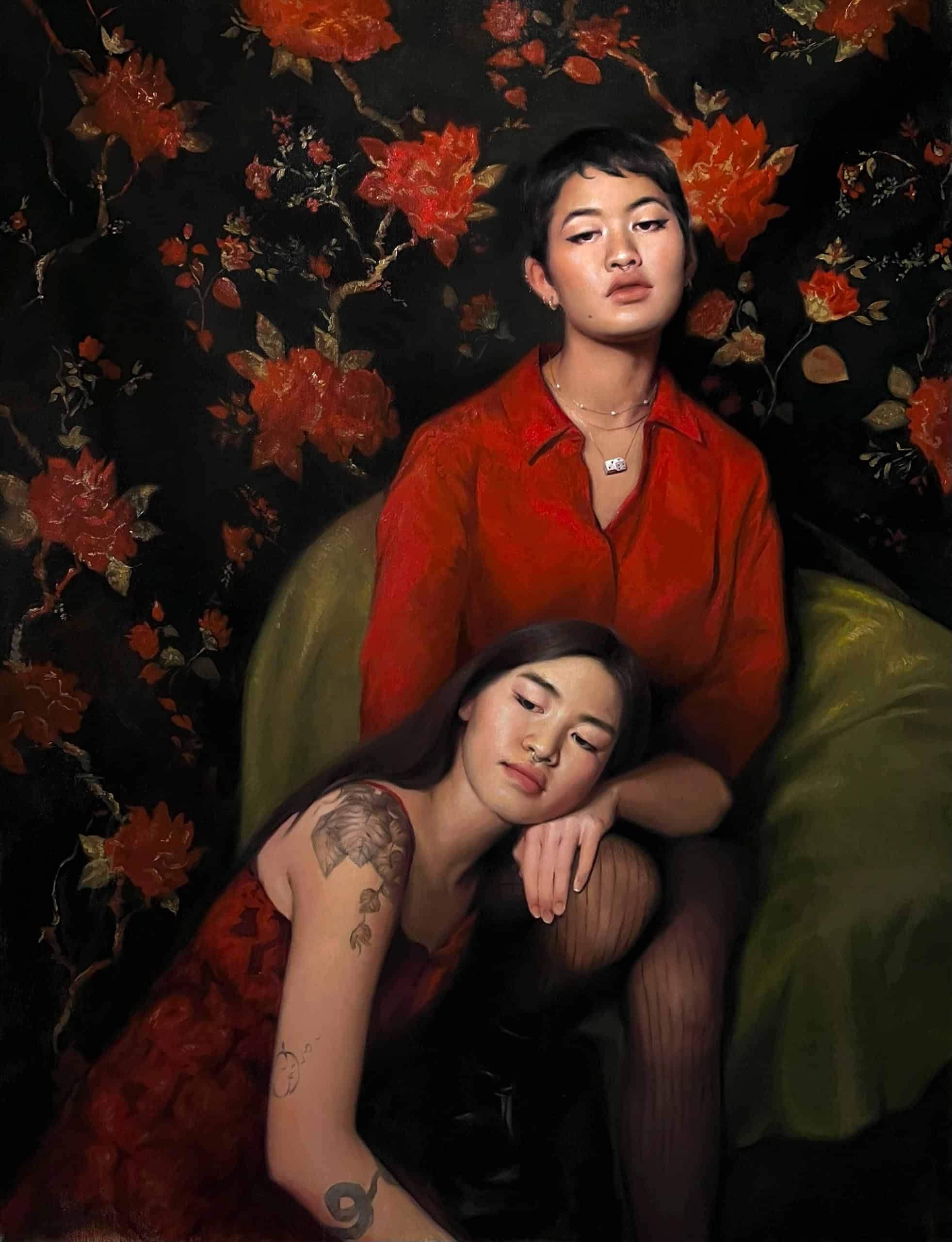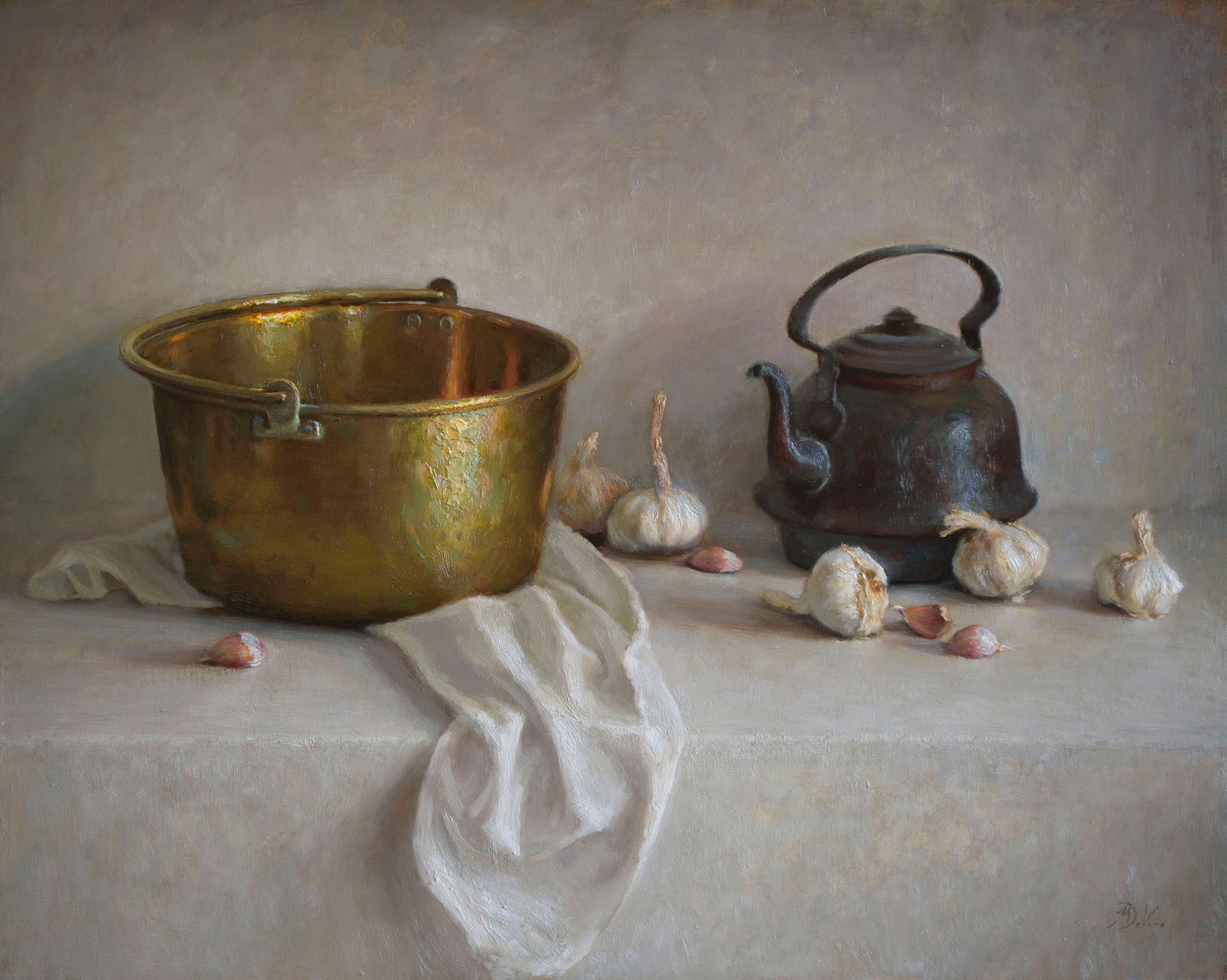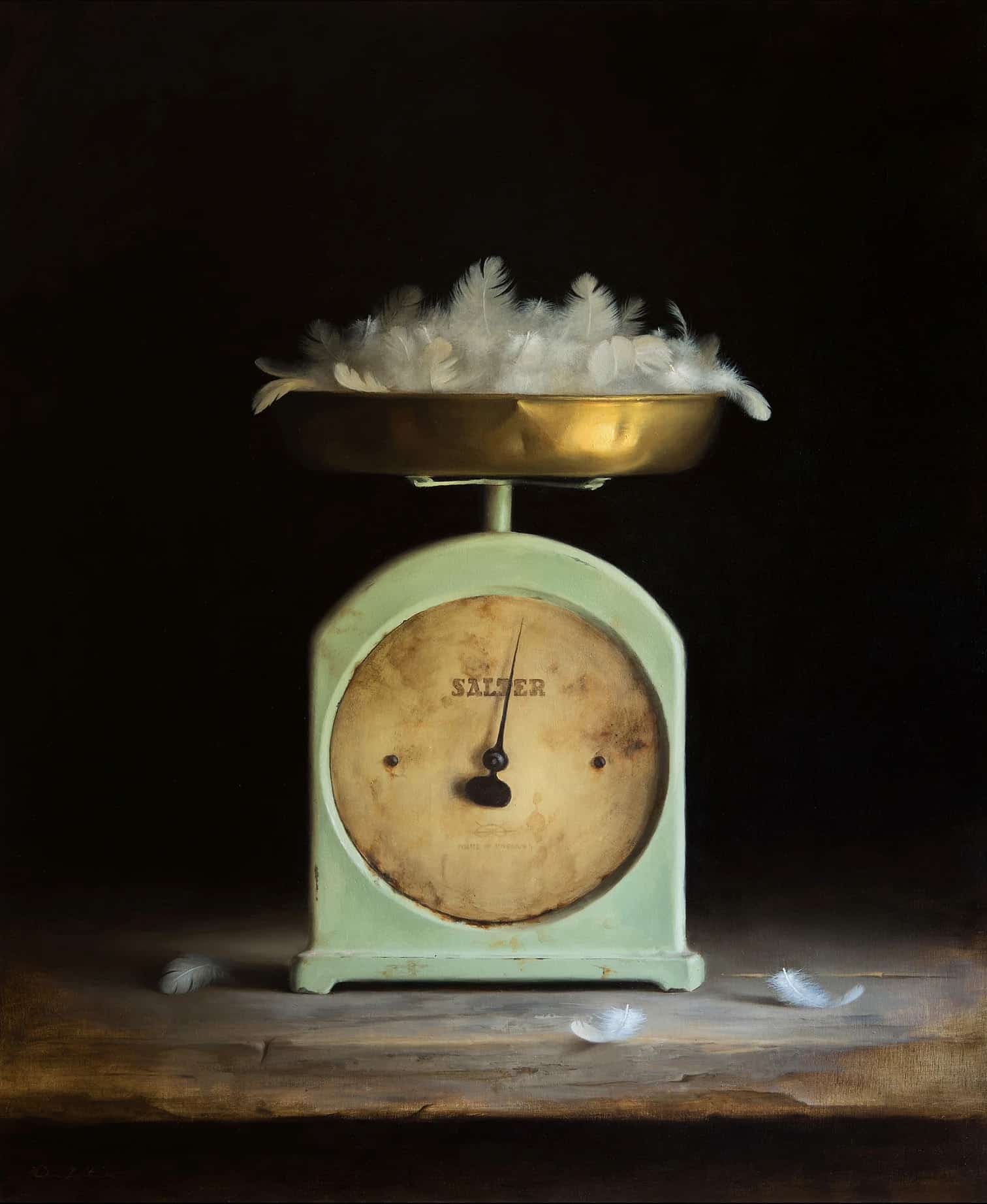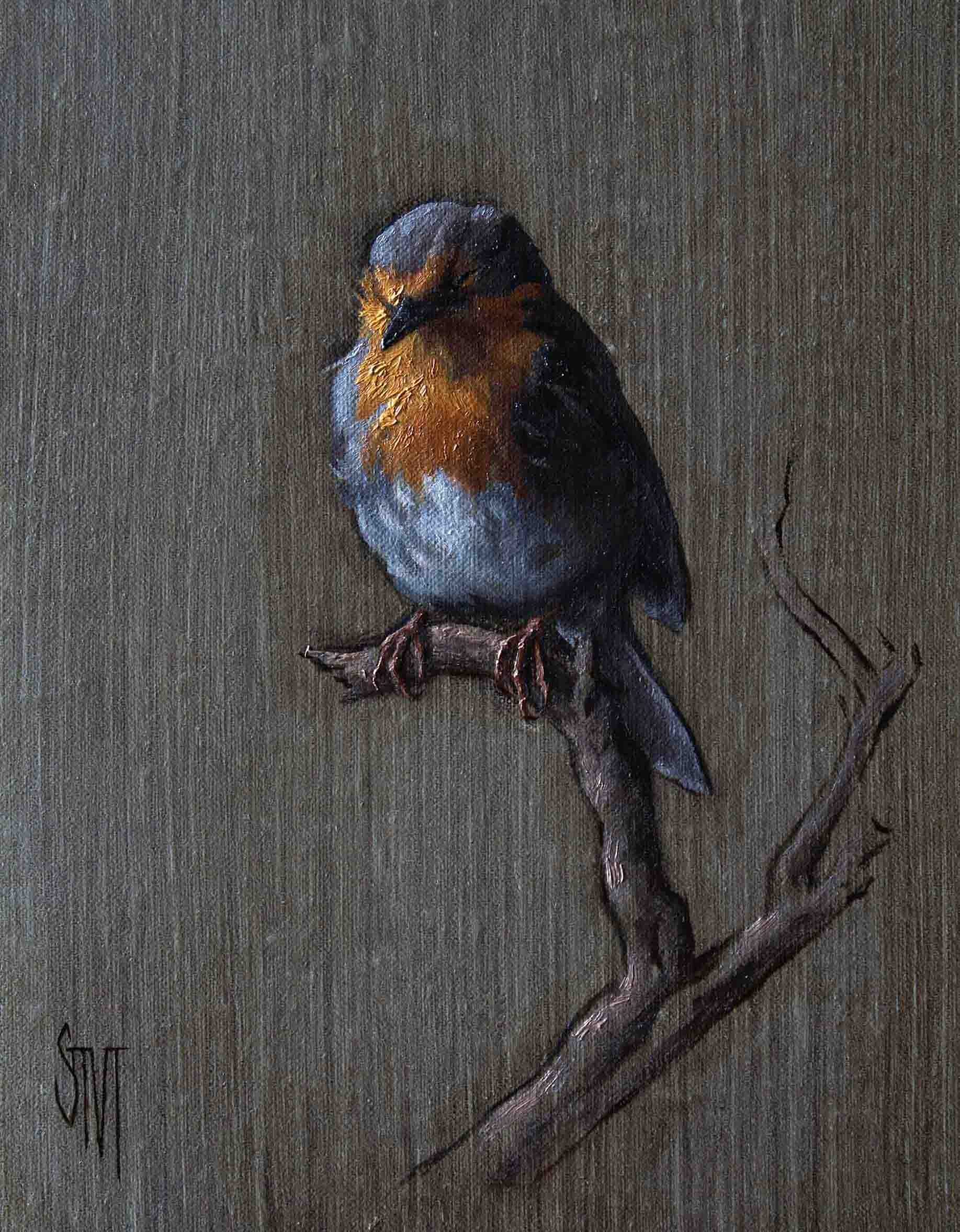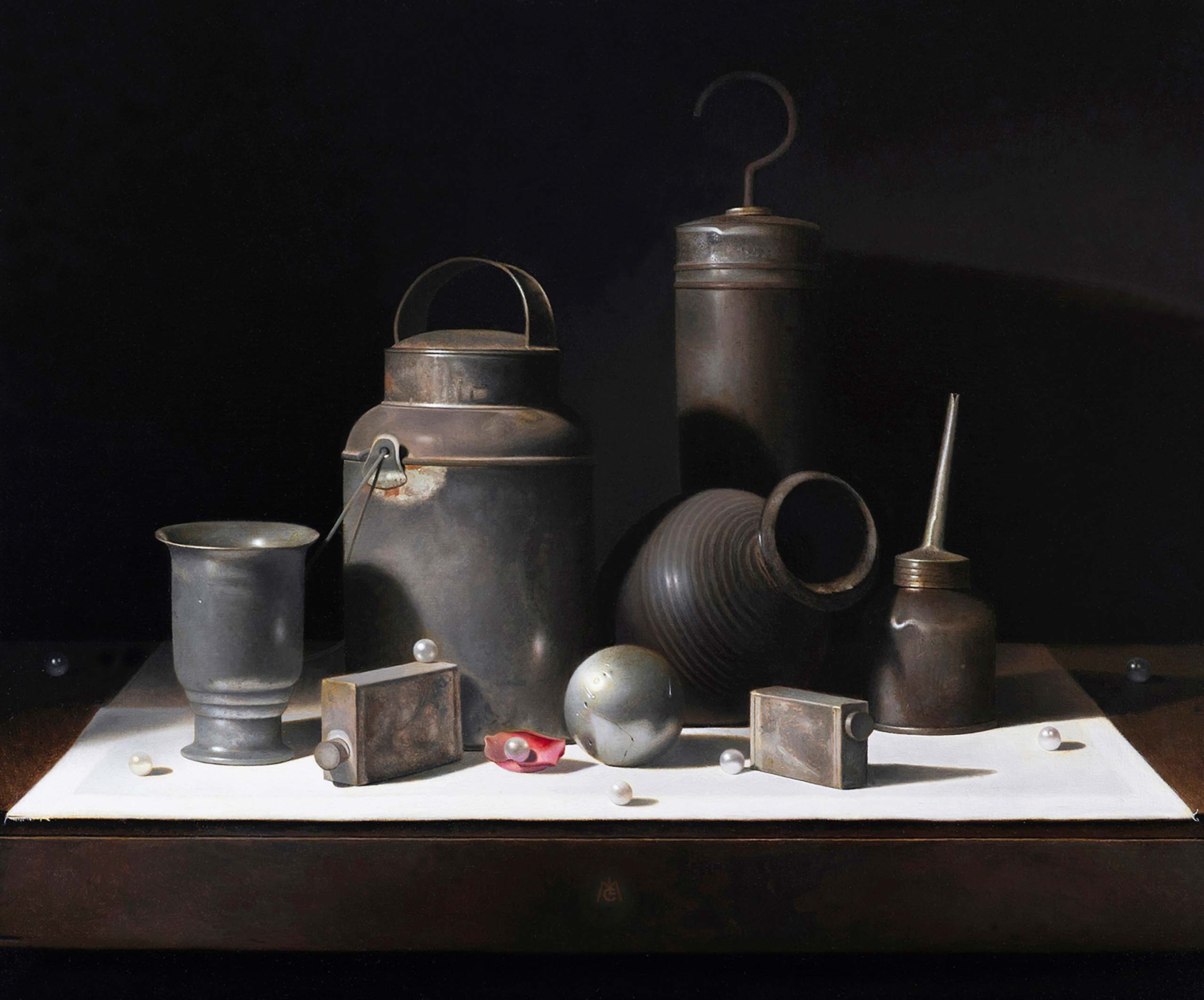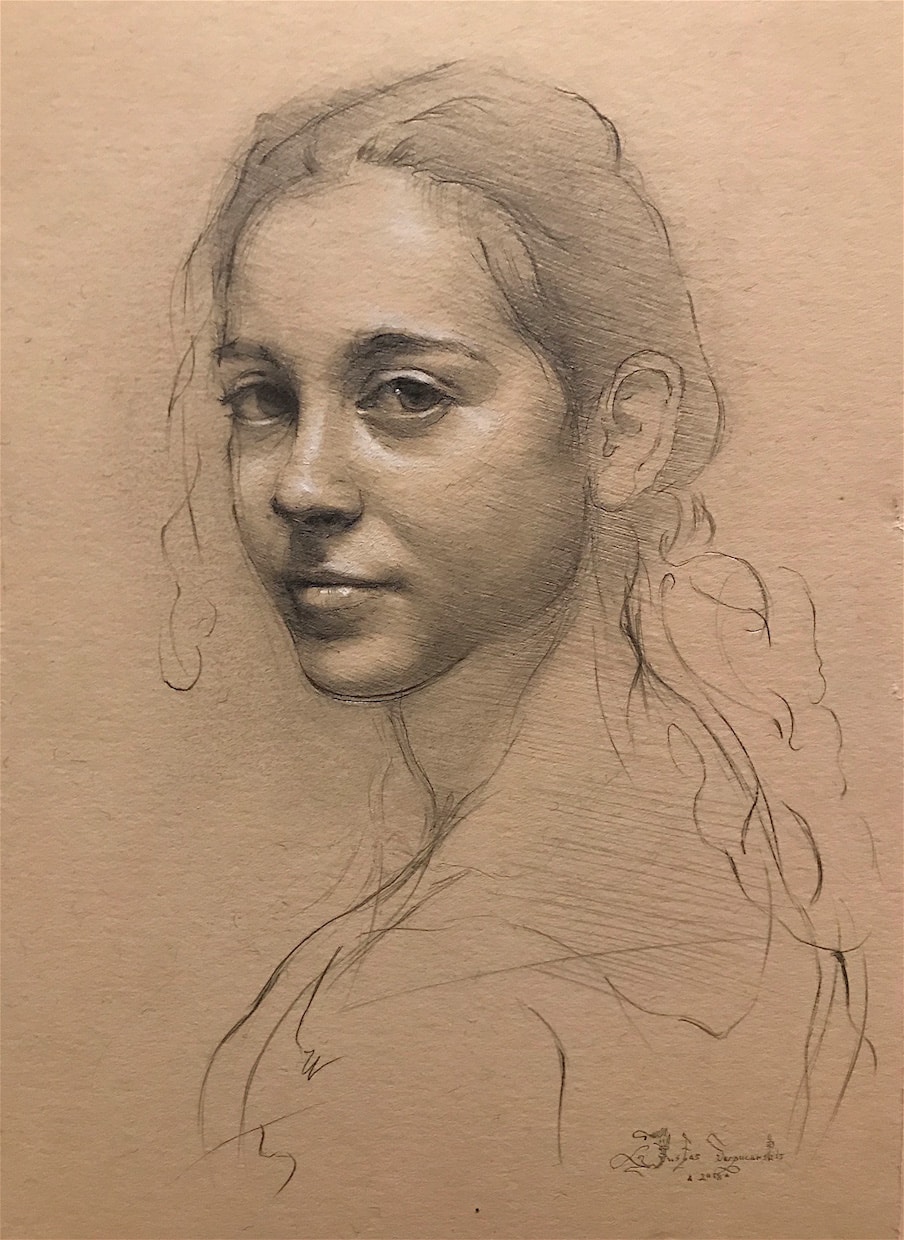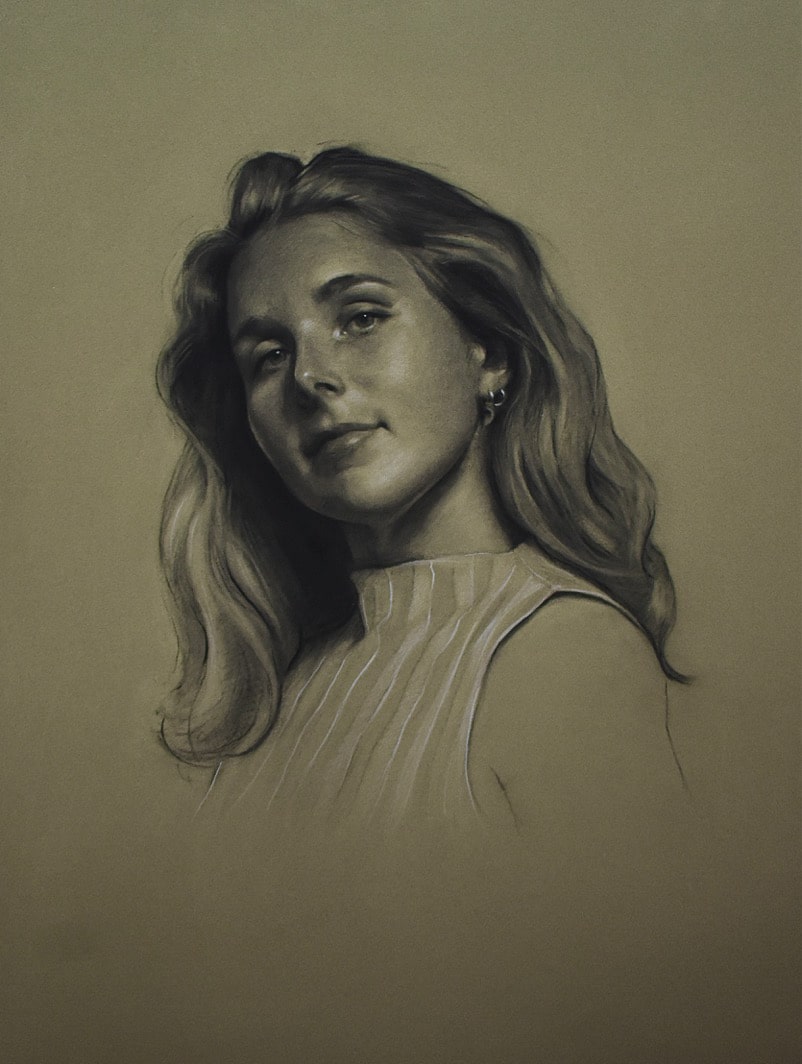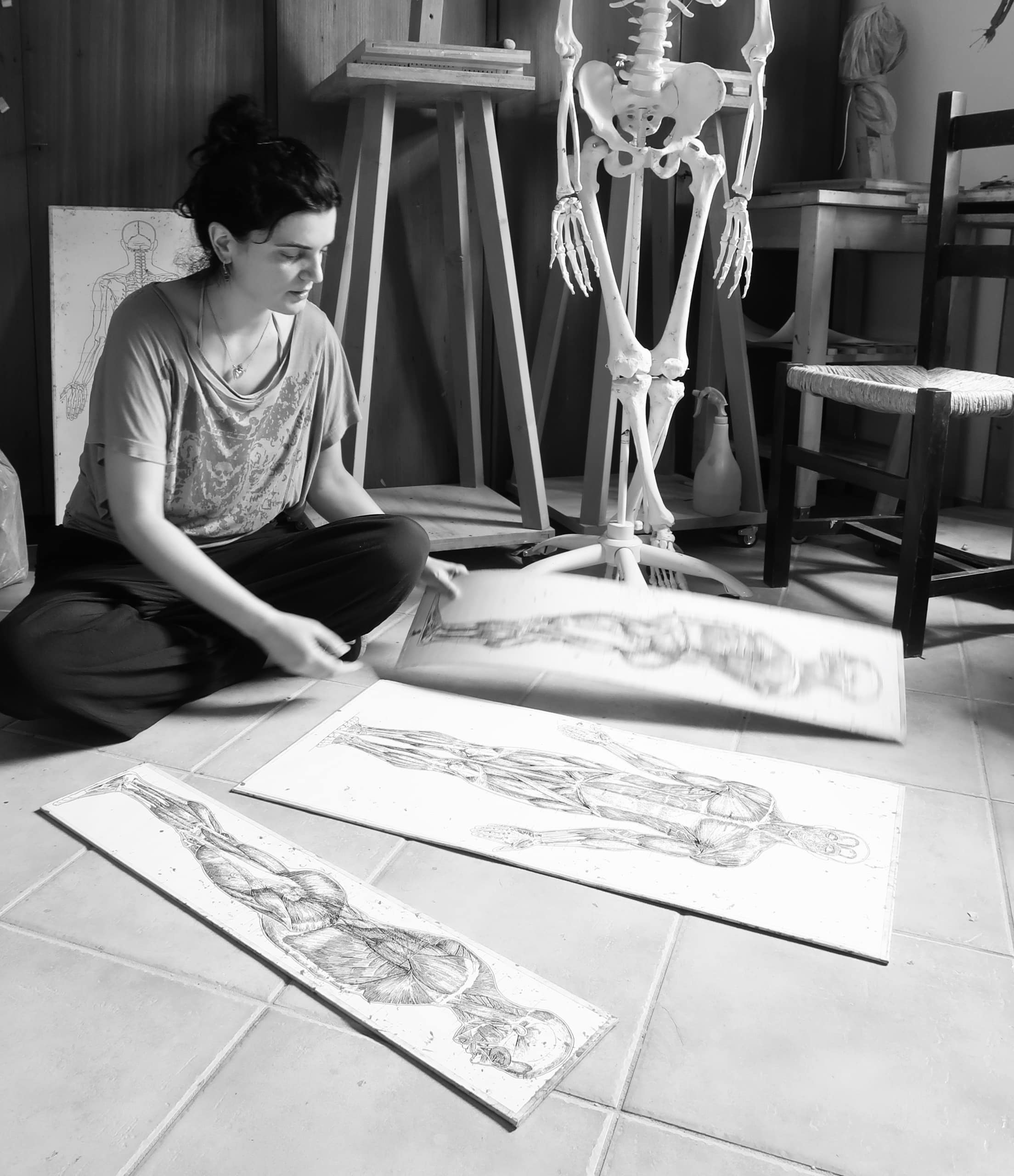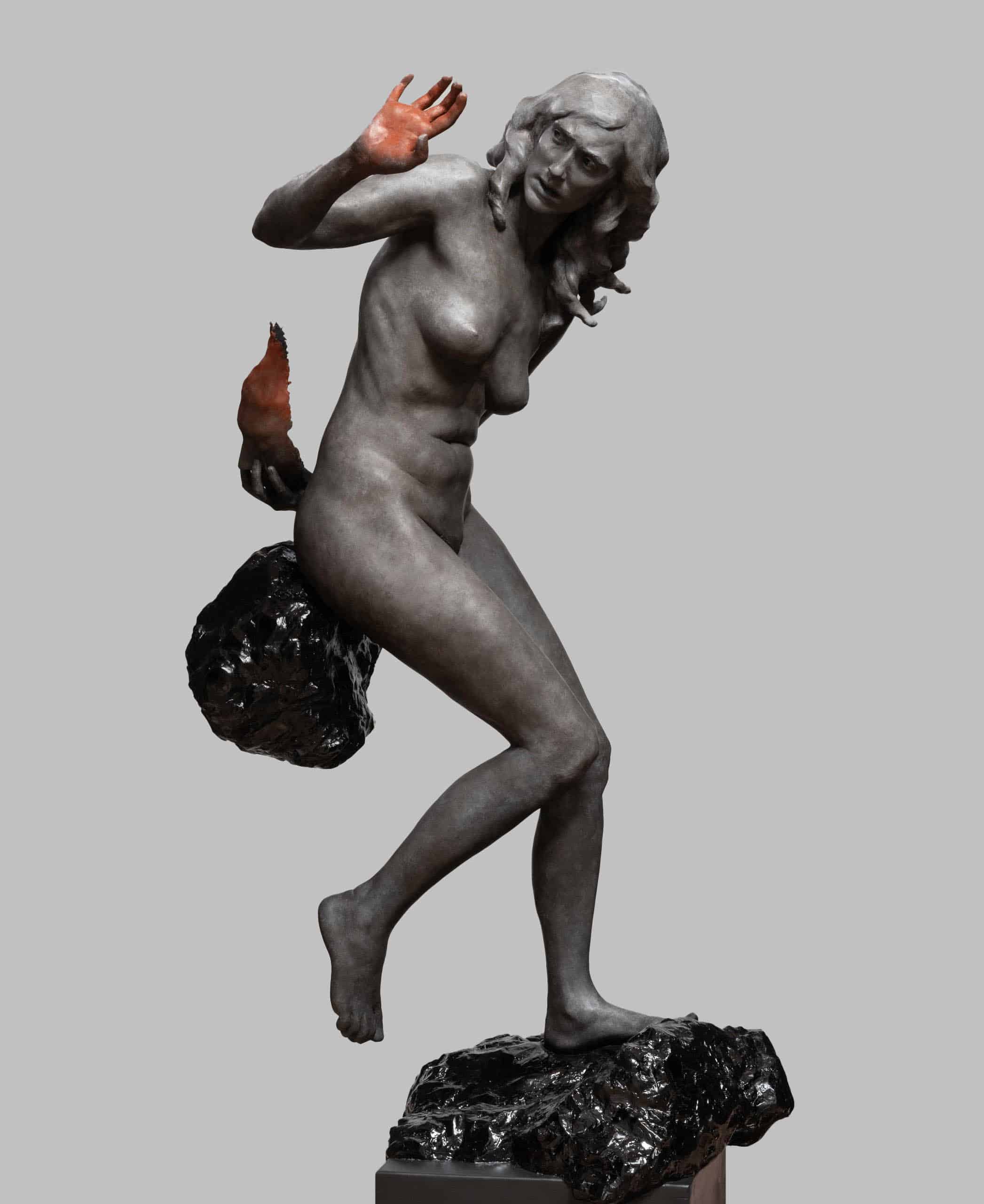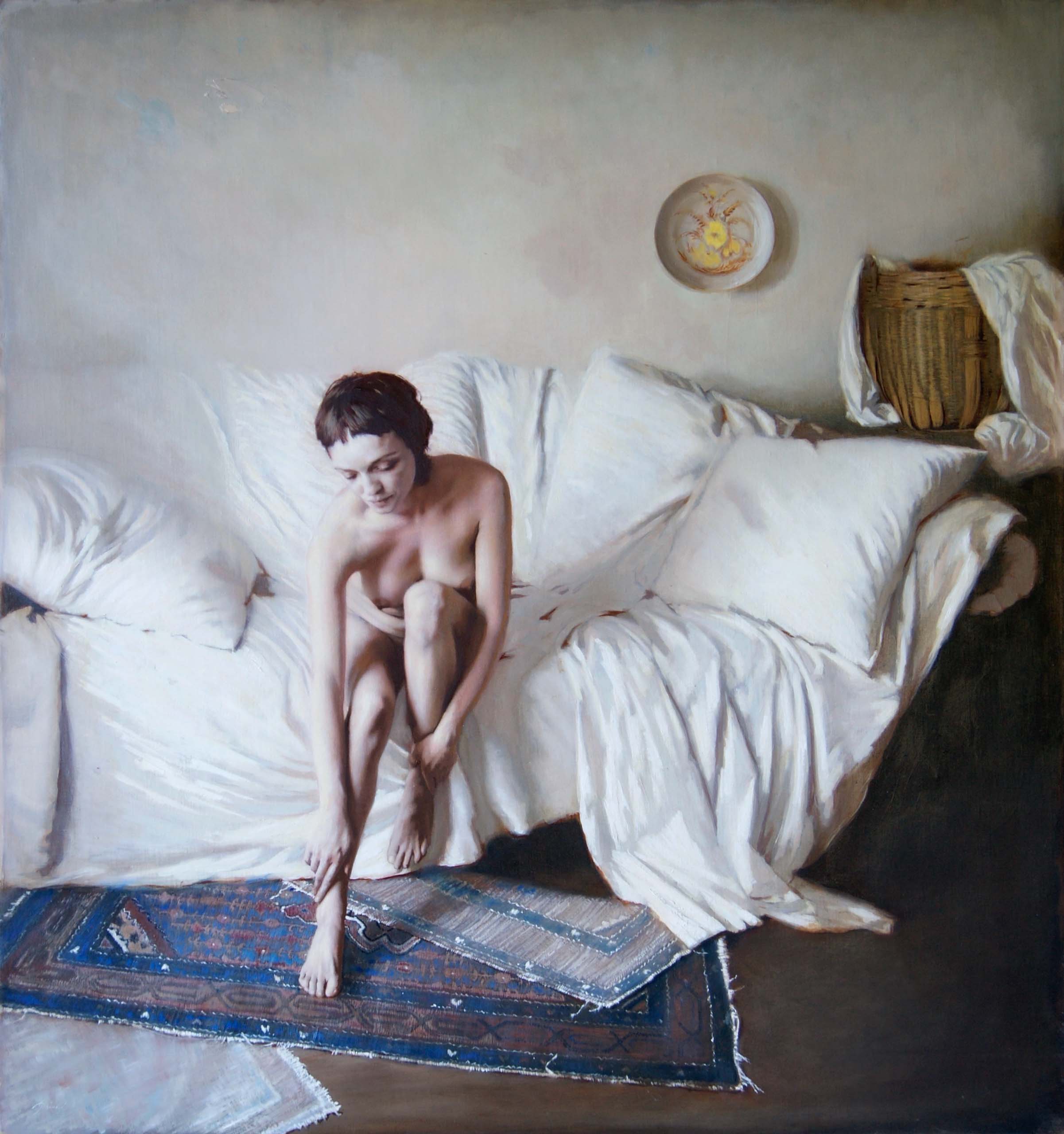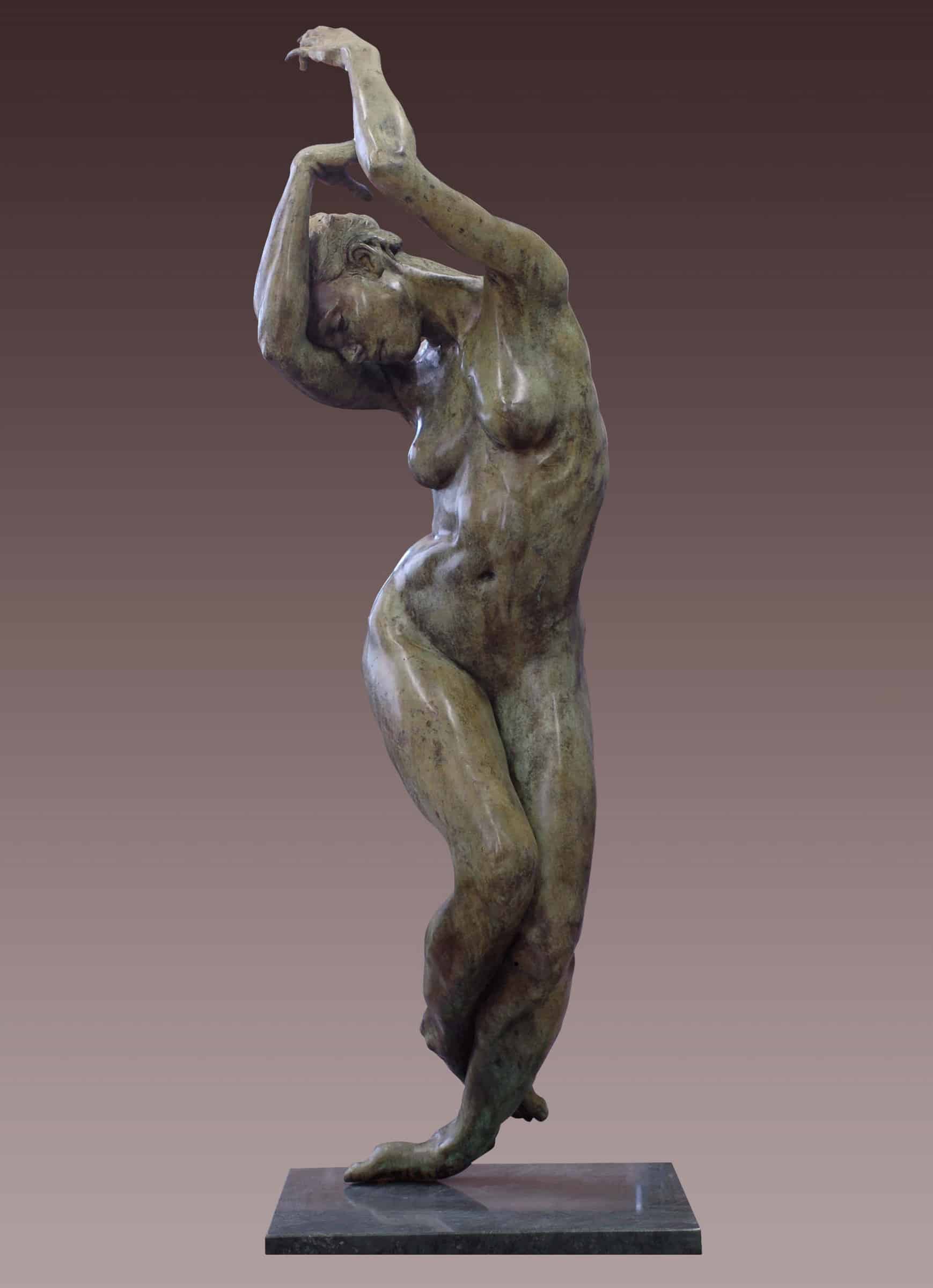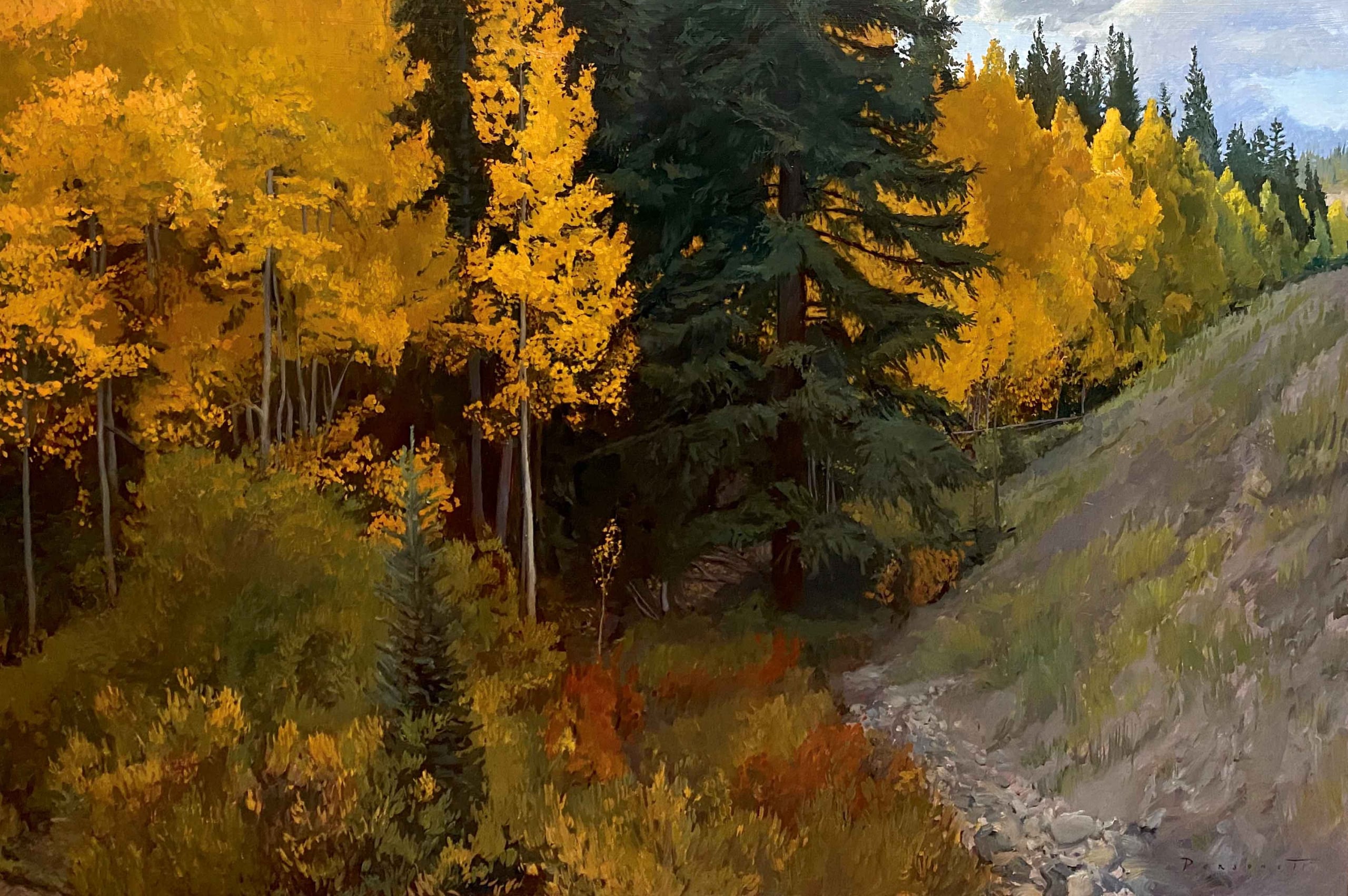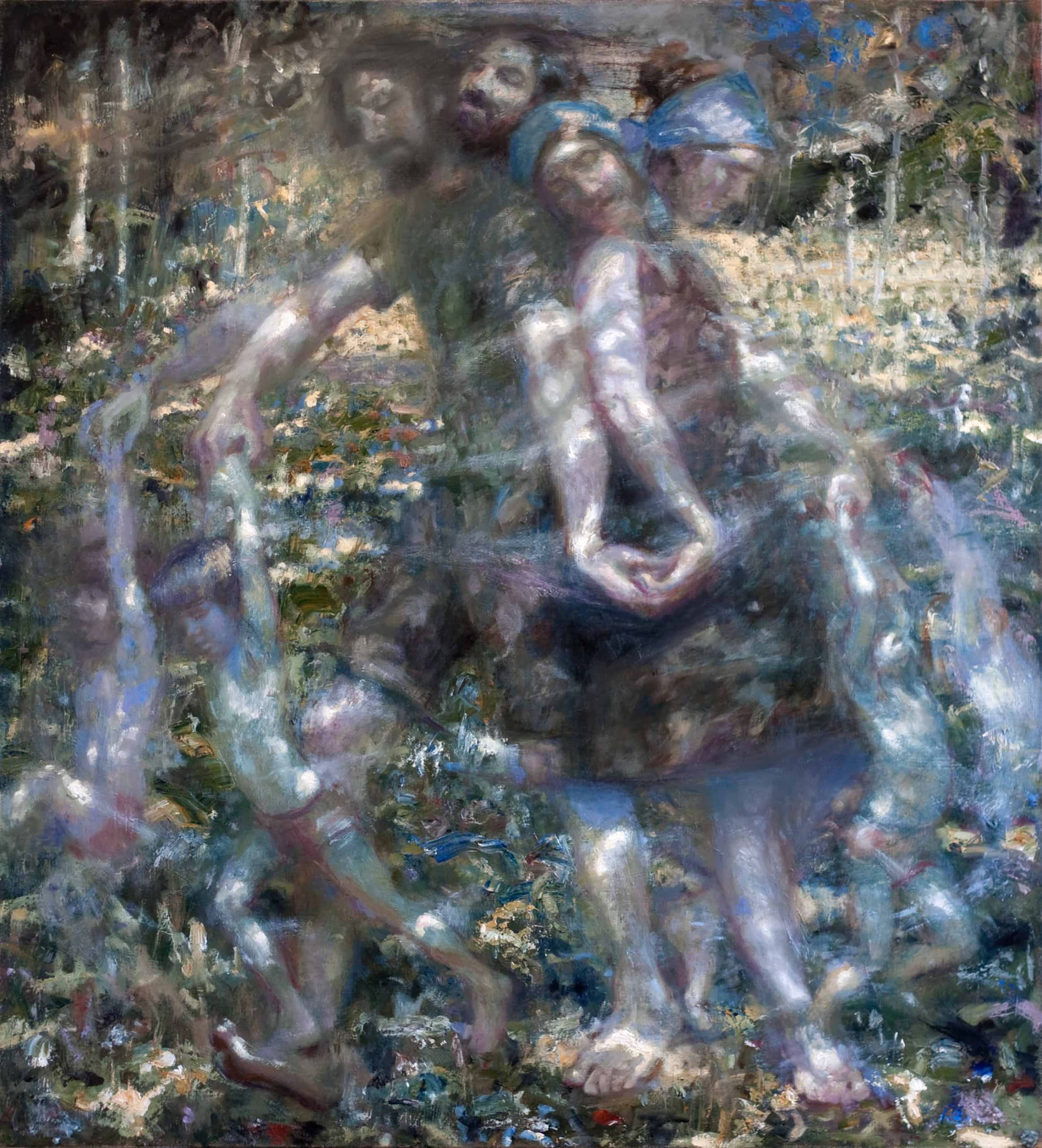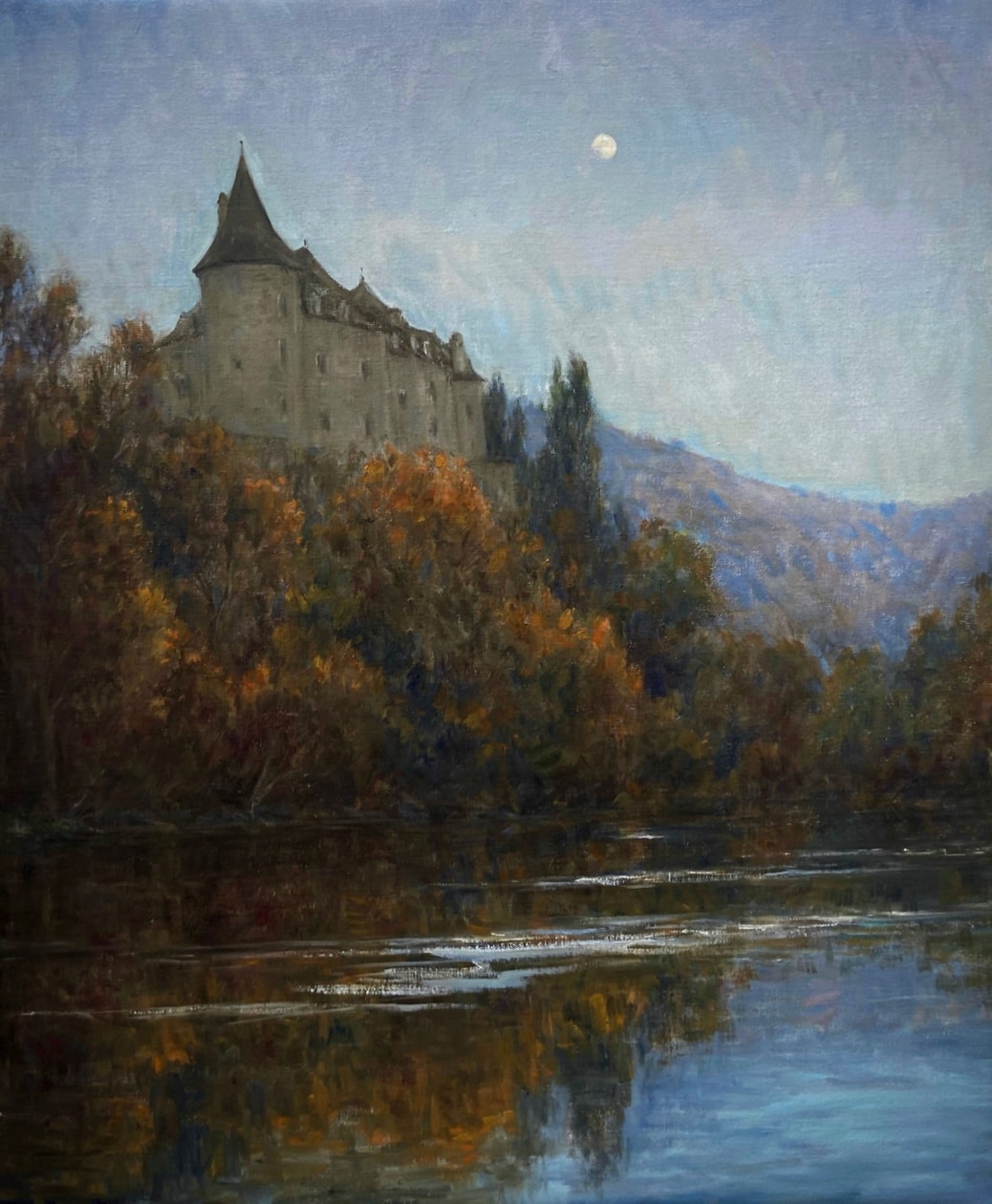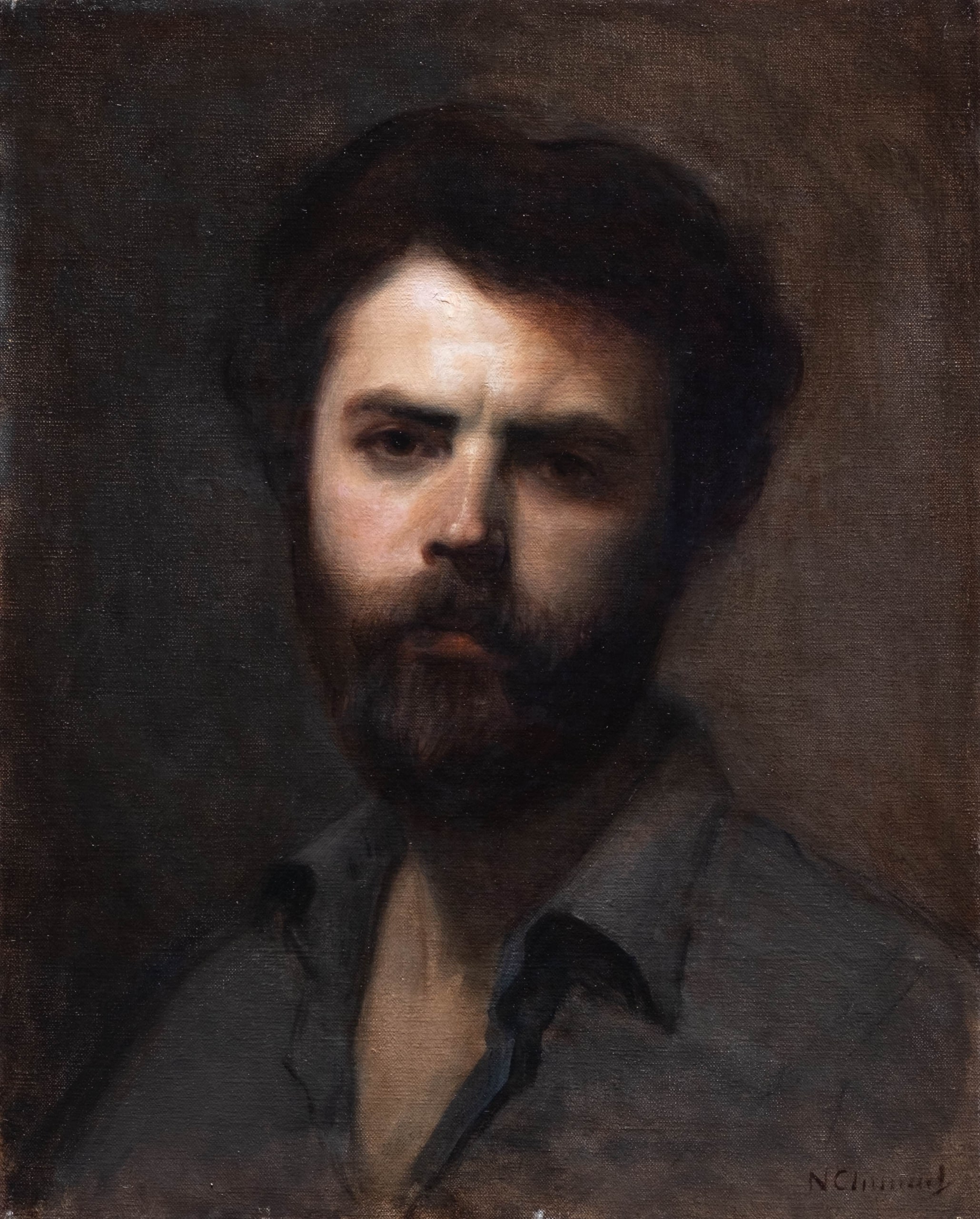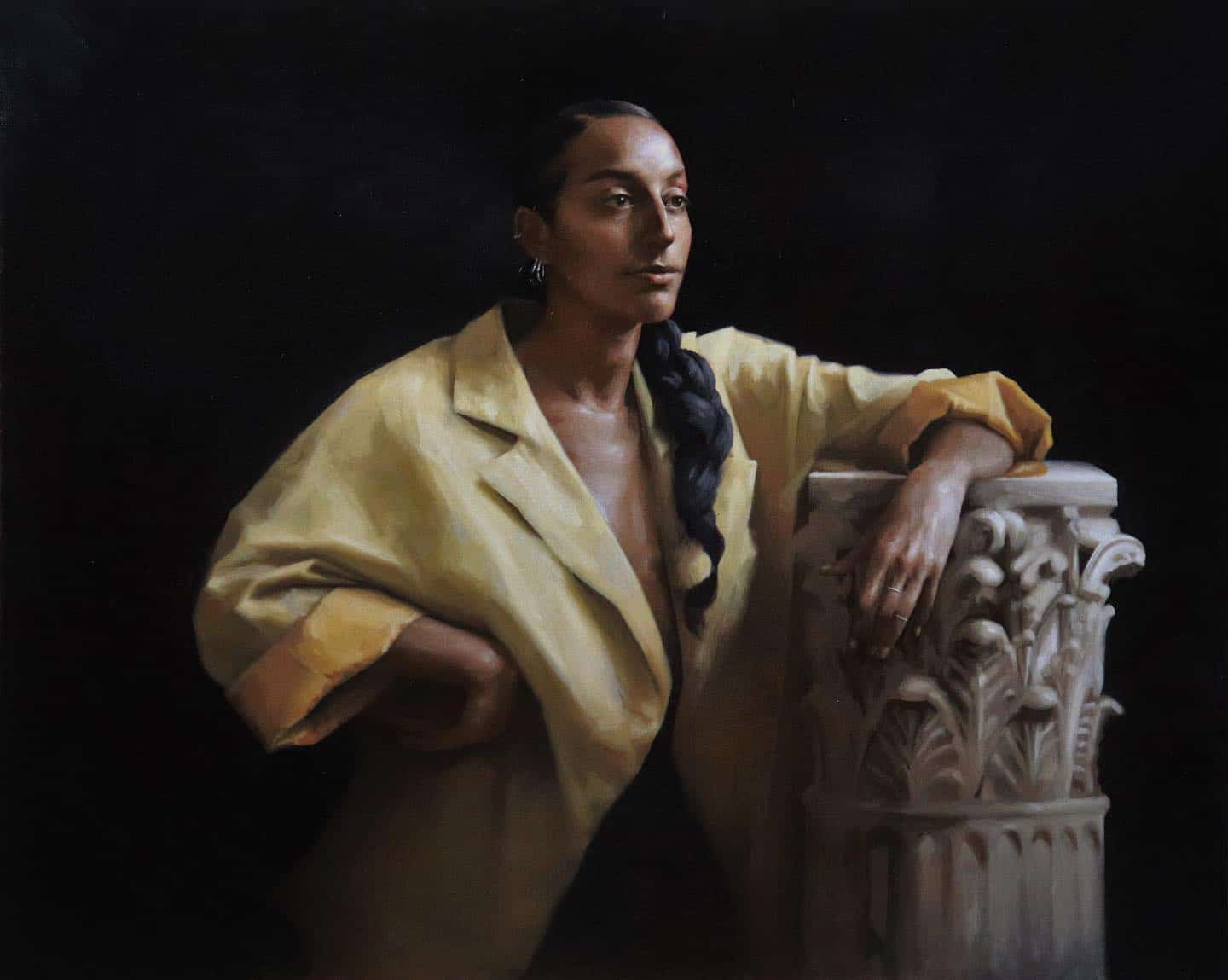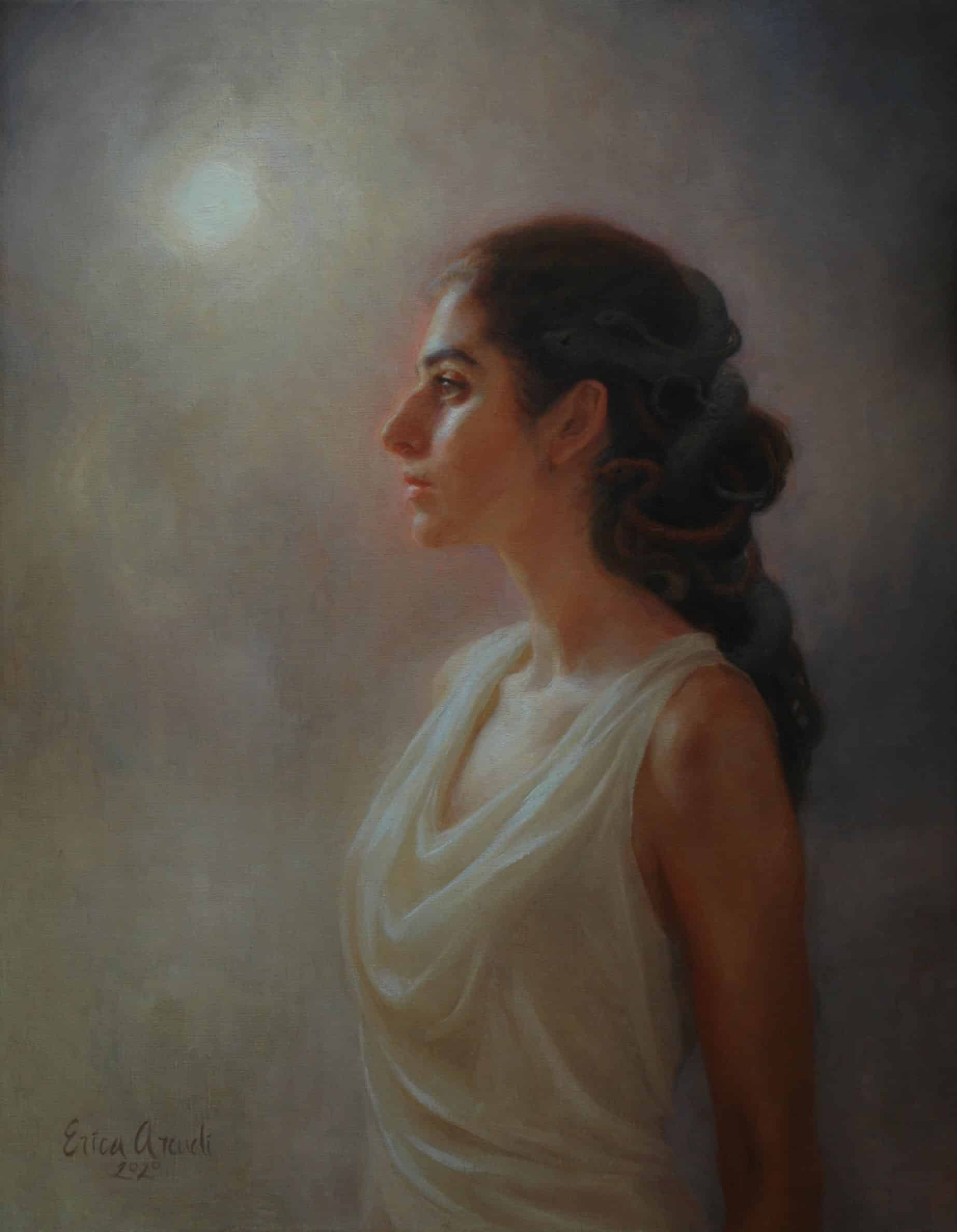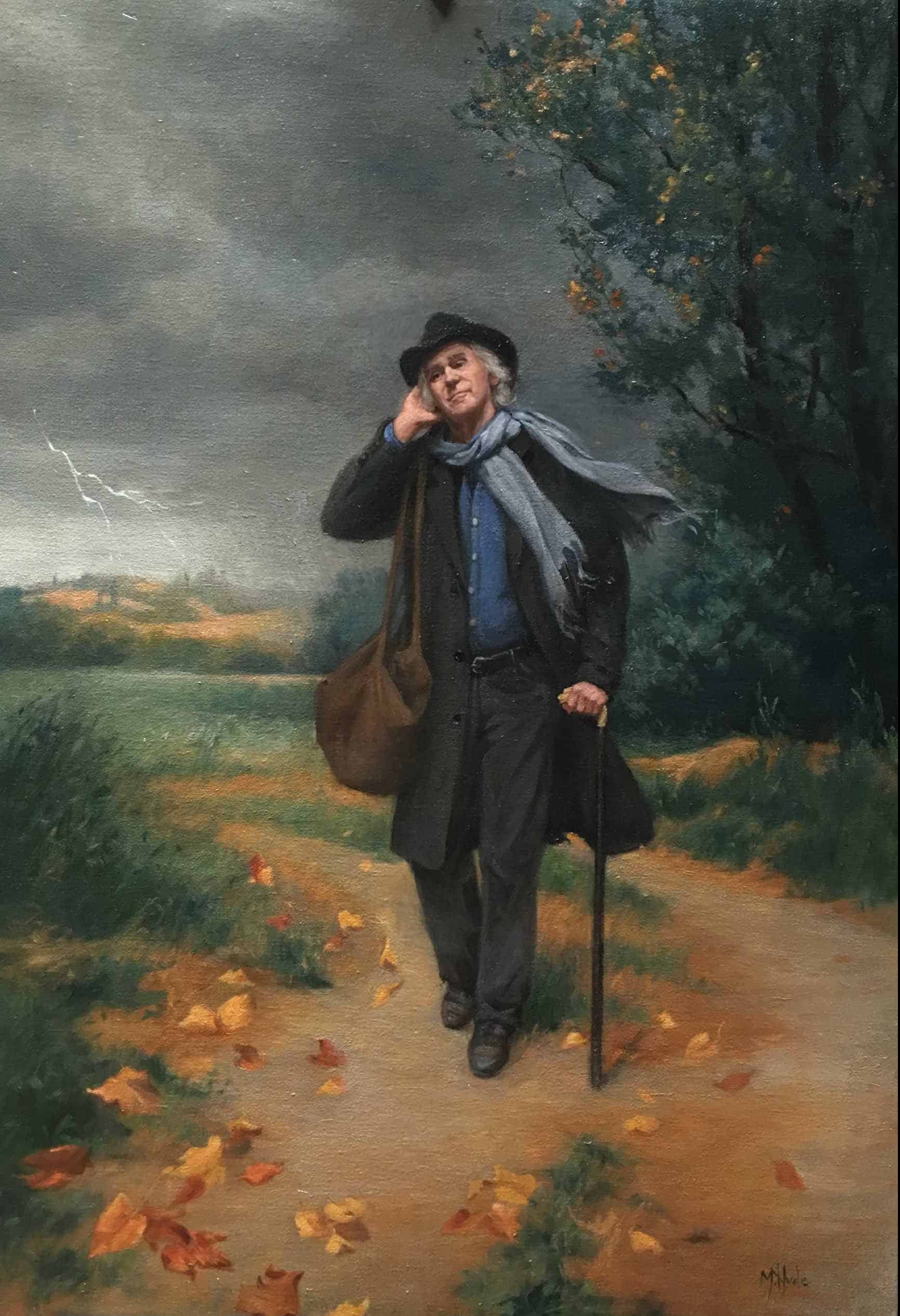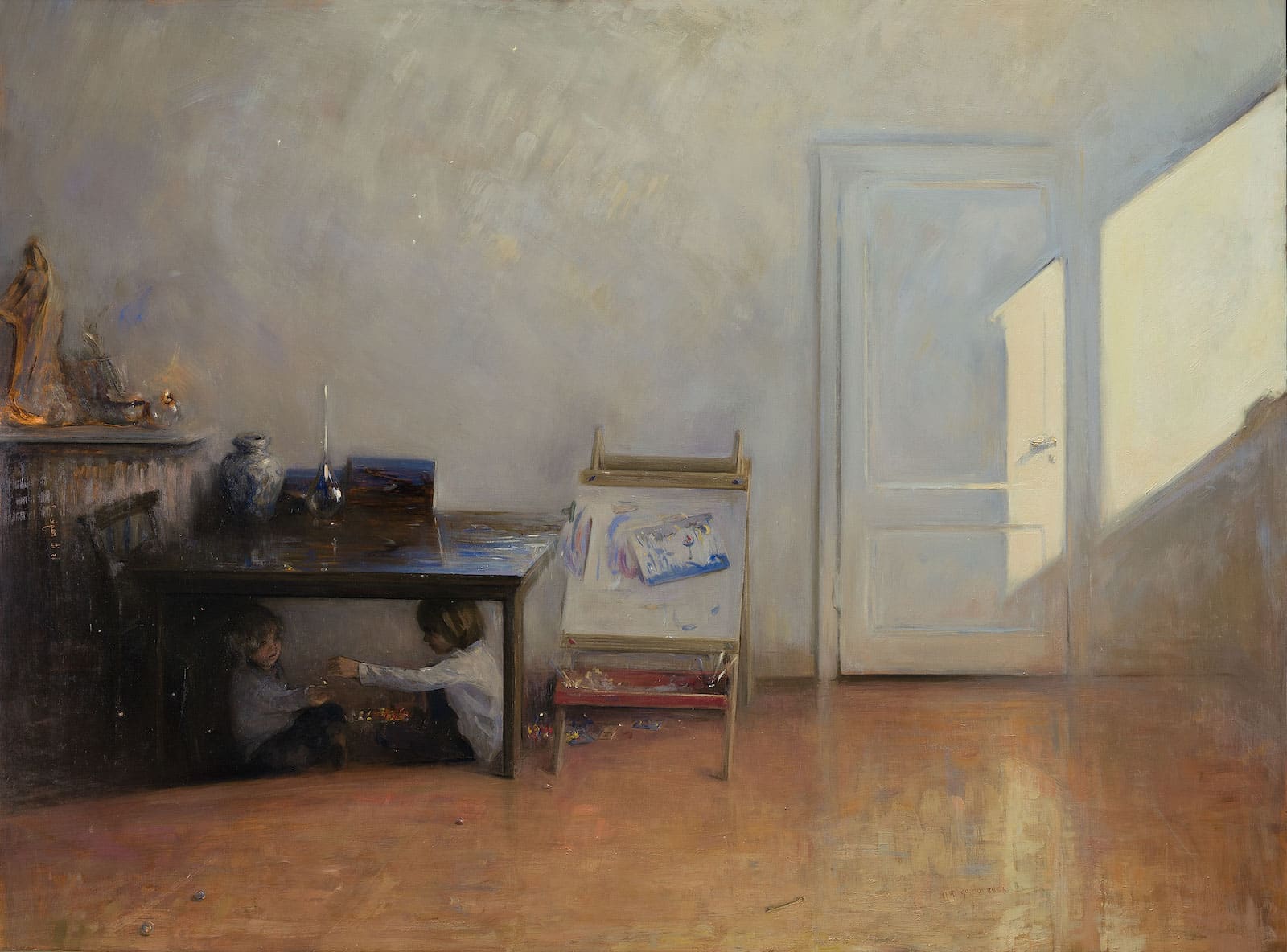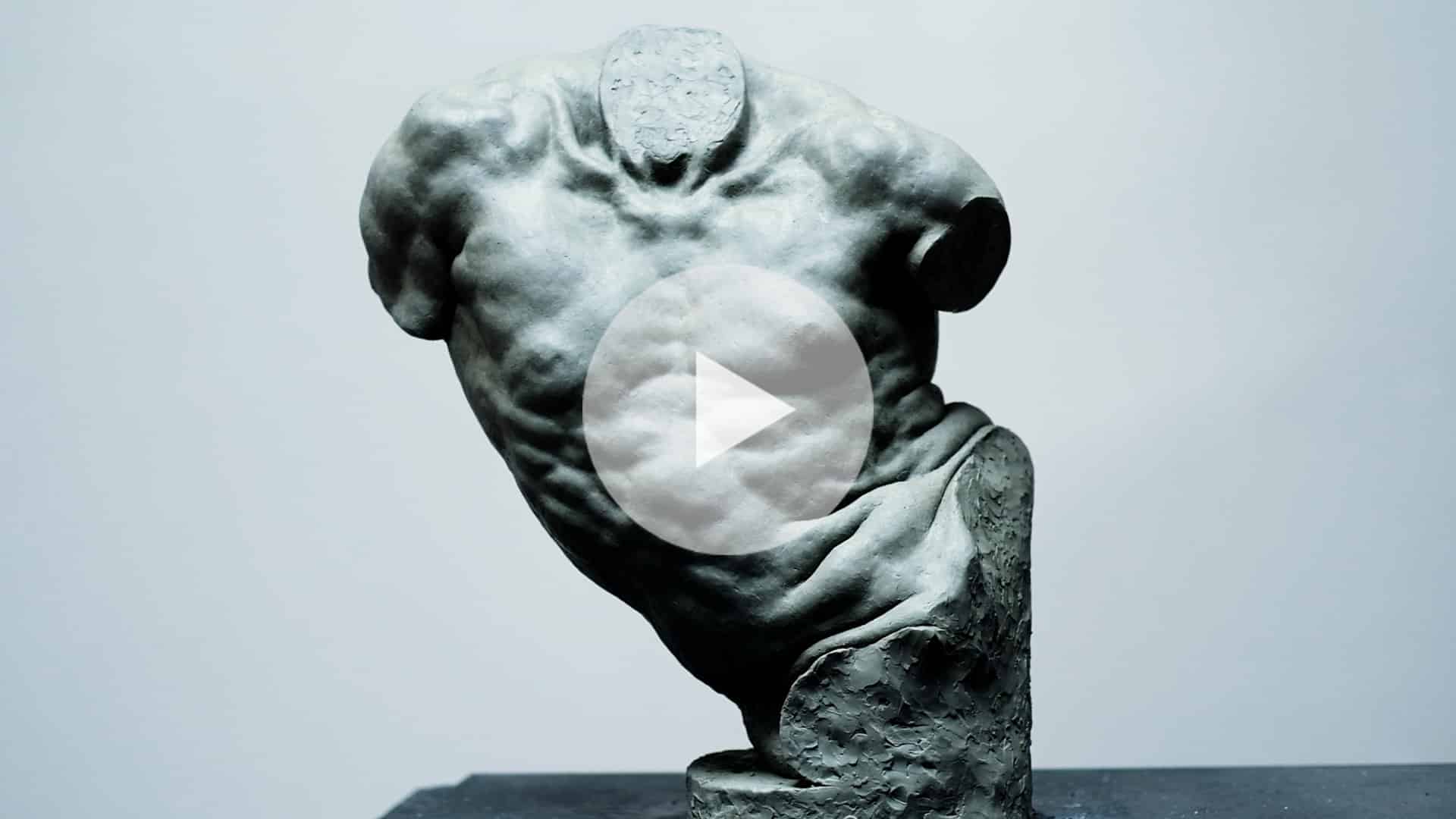August 18, 2023 / Spotlight on Art
Solitude by
Anil Surendran
Sculpture gives me an opportunity to reflect on the journey of the human species, its interaction with the divine earth and living beings. The opportunity to represent the energy that’s been loaned to me in my finite physical form.
Anil Surendran, "Solitude", Finished clay, H200 x W30 x D23 cm, 2019
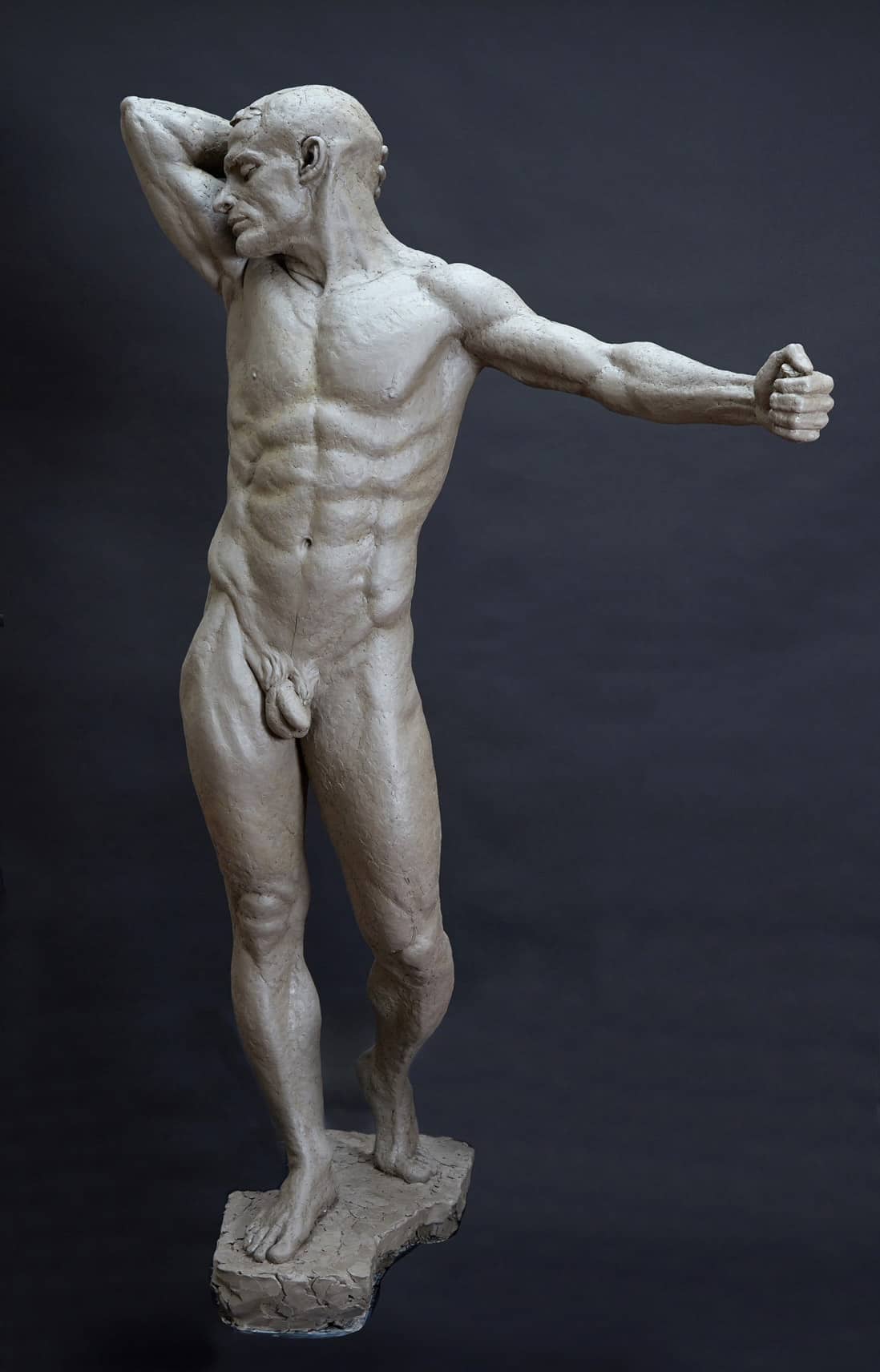
Anil Surendran is a realistic and contemporary figurative sculptor in England, recognized as an ARC Living Artist and has received many commendations for his works in the international competition circuit.
While there are many contemporary sculptors, few have as interesting a career path as Anil’s. Following in the footsteps of other great multidisciplinary artists such as the physician-poet John Keats or the scientist-artist Leonardo da Vinci, Surendran also works part time as a doctor in the UK, teaching both undergraduates and postgraduates.
It wasn’t until 2007 that Anil began wood carving and felt that he had found his second calling after medicine. After 8 years of sculpting freelance, and attending multiple workshops in the USA, France, and Florence, Italy under the tutelage of well-known sculptors, he enrolled in The Florence Academy of Art for the three-year intensive program, graduating as a sculptor in 2018. His time studying in Florence, as well as his career and interest in medicine have helped to shape his journey as an artist and greatly inspire his current body of work.
Below we are excited to present you with a feature on the first life-size bronze sculpture completed by Surendran, Solitude, touching on the influences behind its creation, the deep meaning behind the sculpture, and how it fits into Anil’s artistic practice.
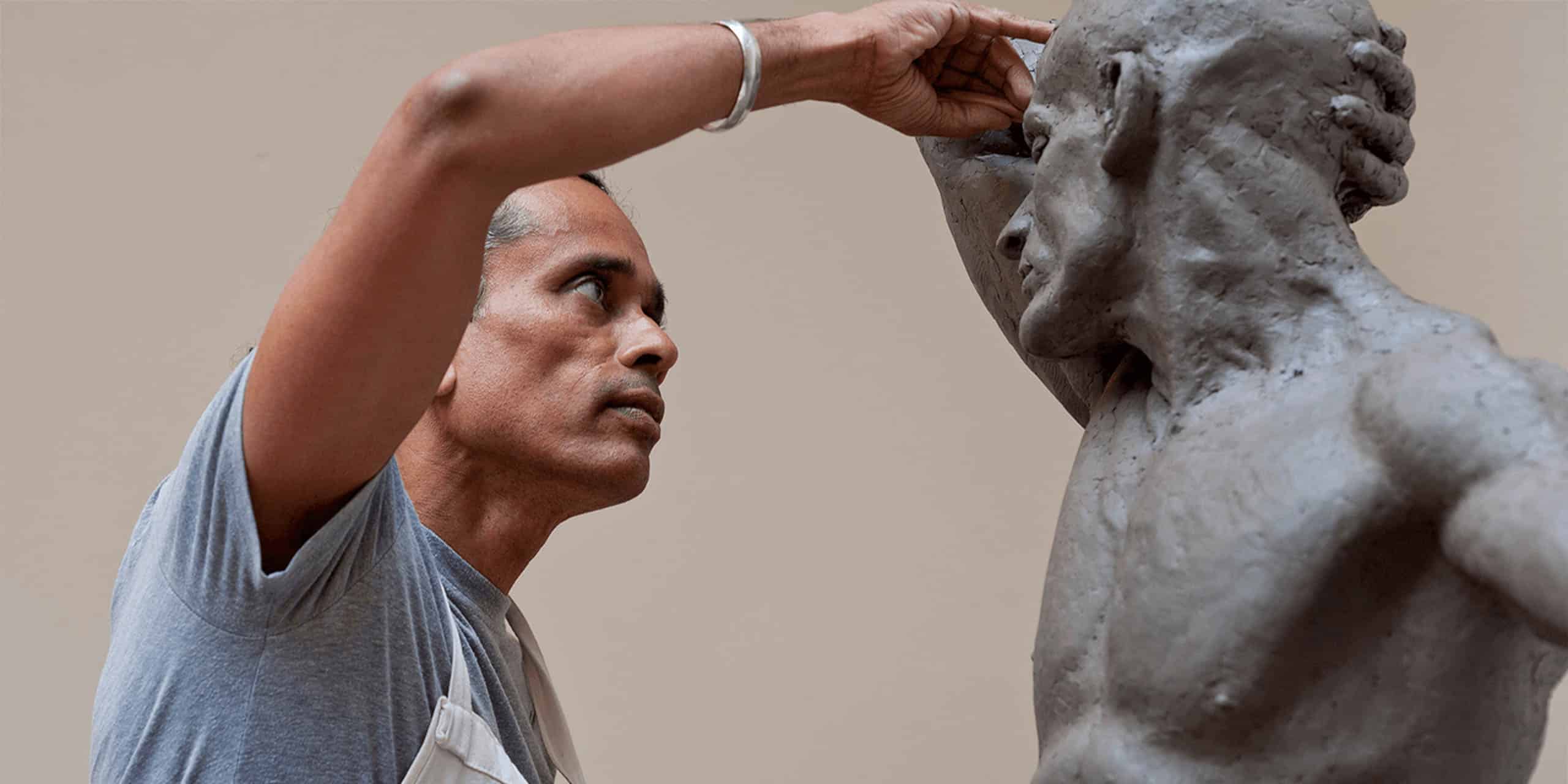
Anil Surendran sculpting in his studio
The Beginnings of Solitude:
When asked about the foundations of Solitude Anil says that the seeds for this piece were sown in Florence as he studied and visited some of the finest galleries in the world. But there are many inspirations that must come together to form a work of this nature.
As a child Anil says he was drawn to the human body and remembers skipping school lessons to read Desmond Morris’s Manwatching: A Field Guide to Human Behavior in the public library. This childhood interest then found more footing when Surendran studied the work of Dr. Paul Eckman, a psychologist & Professor Emeritus at the University of California, whose study of human emotions and expression fascinated him. He says “connecting the anatomy with emotions became the alphabets of my work and the building blocks of me as a sculptor.” Those early “building blocks” can now be found as a major part of Anil’s artistic practice where the confluence of his early interest in body language and his practice and study of medicine can explicitly be seen in the deep meaning of Solitude.
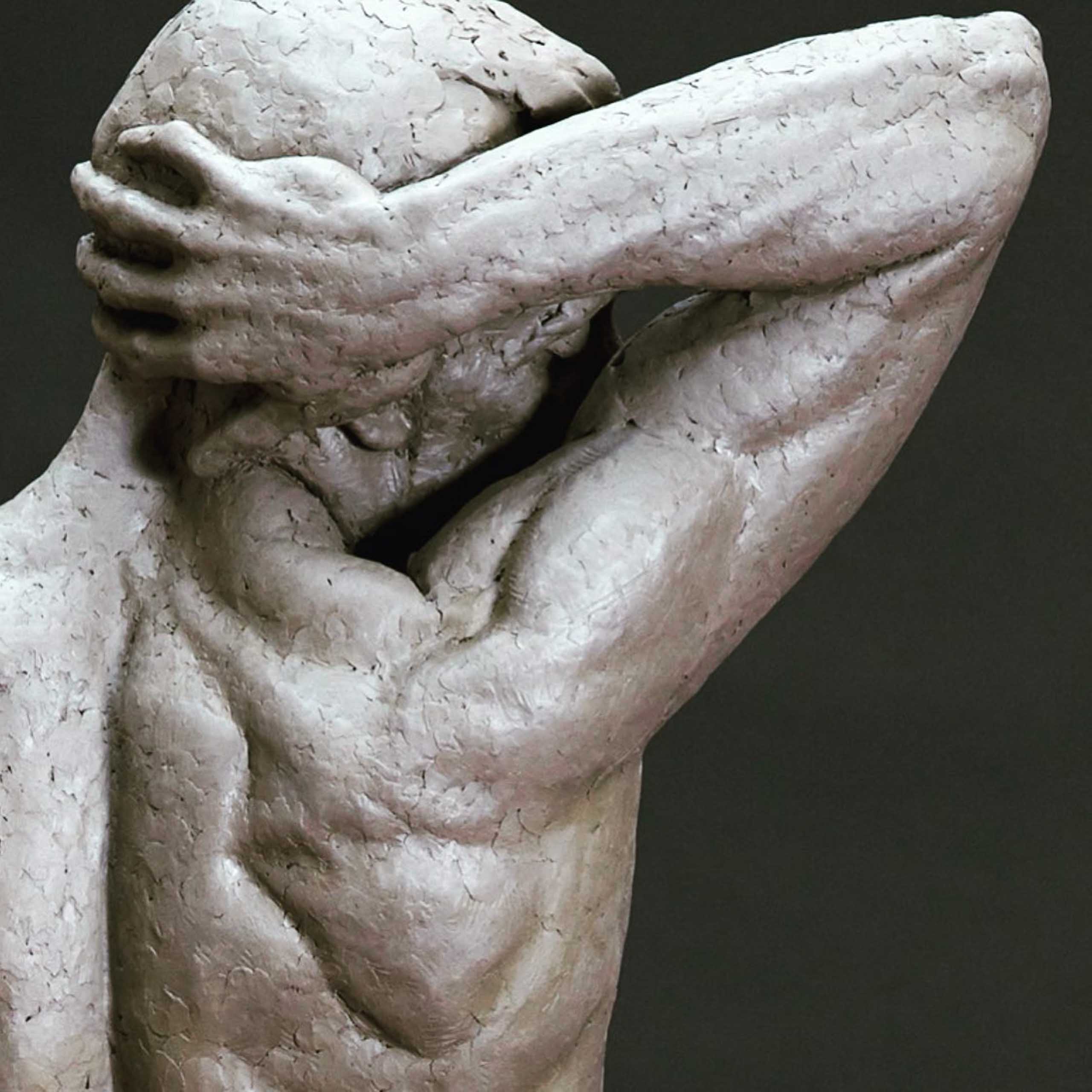
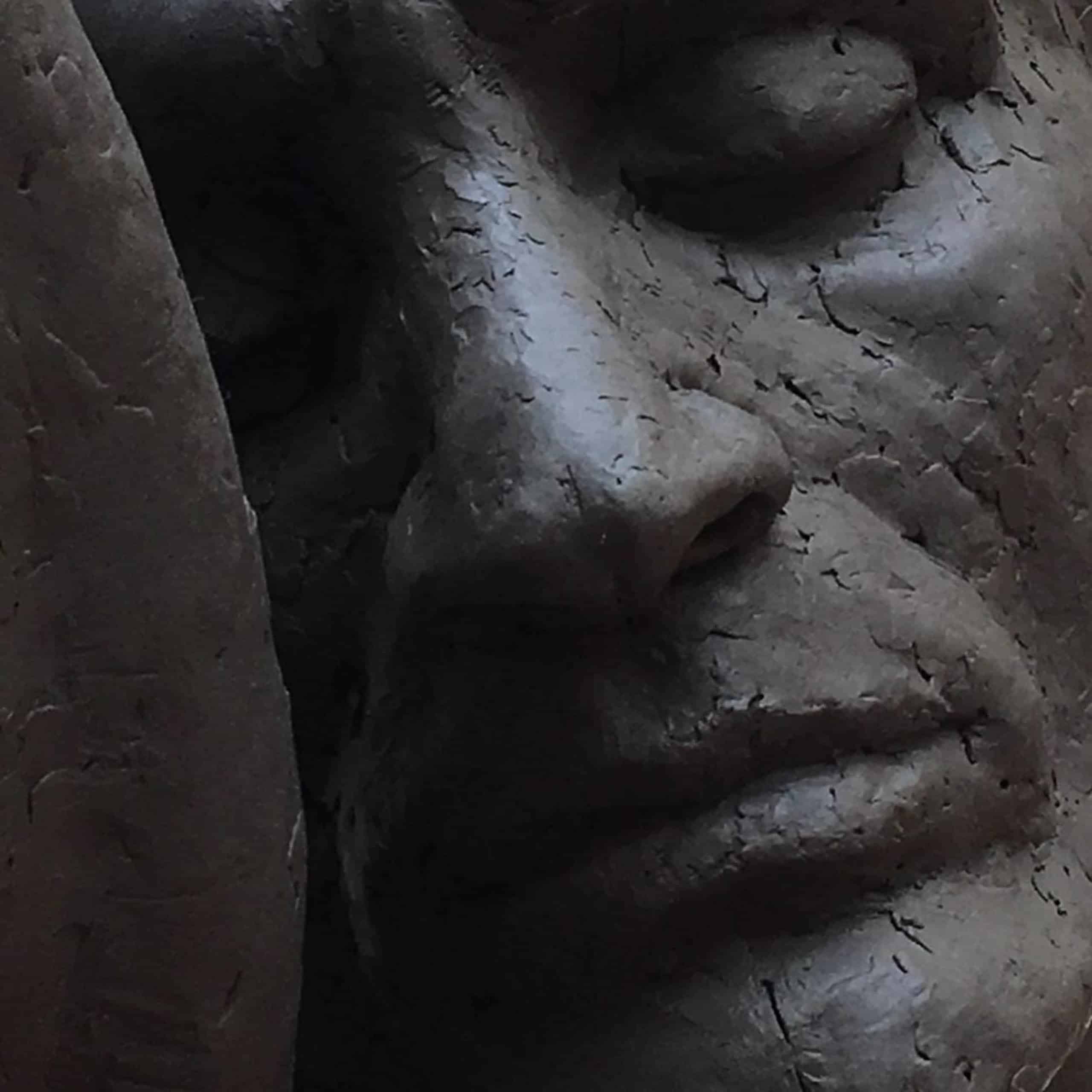
Details of the anatomy of the shoulder and face
Surendran states that in Solitude “I wanted to capture a man at his prime in total comfort with himself. To depict solitude as a state of choice. Solitude demands contentment as a state of mind and body as opposed to loneliness. Here, I wanted to depict a man in deep thought letting the natural beauty of his body speak of itself. As a bronze sculpture standing at about 7 1/2 foot with the base, it is imposing, but encourages the mind to explore.”
The Classical Element:
Inspired by the artworks seen around Florence, the home of Donatello’s David (c. 1440–1460), the first nude figure in the round since antiquity (over 1,000 years), it is fitting that for his first life-size nude figure in bronze that Surendran would also use a “classical contrapposto to give the piece a sense of timelessness.”
This classical element can be seen in a few other works of Surendran’s, namely, his sculpture Caress.
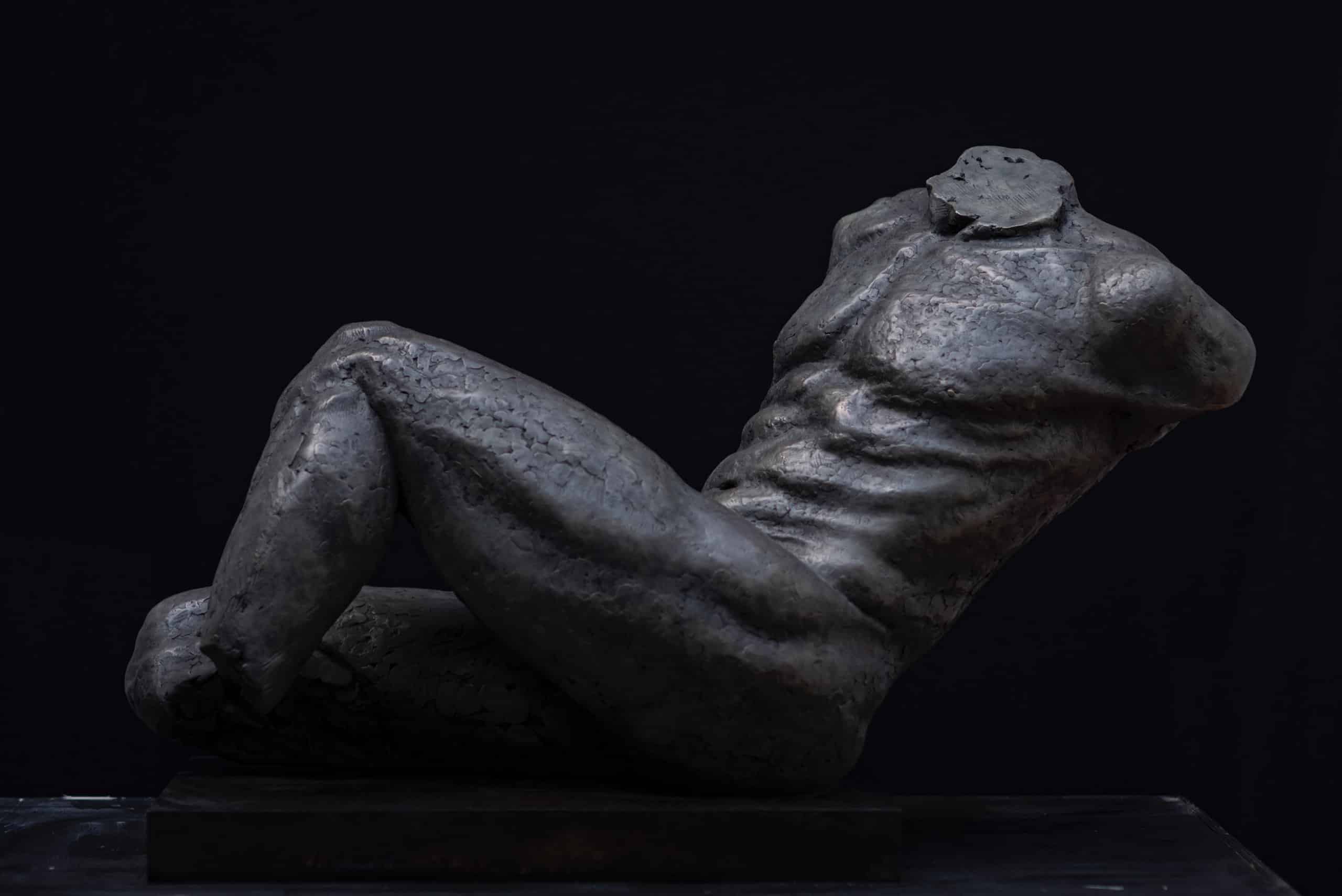
Anil Surendran
Caress
Bronze
H57 x W44 x D88 cm
2021
The inspiration behind Caress was Michelangelo’s River God (1524). This piece is strikingly similar to one of the Parthenon marbles of antiquity, of the former Elgin Collection, also depicting a River God, showing a classical influence on the Renaissance and that of the Renaissance on Anil’s contemporary work.
“I had the fortune of seeing his work whilst in Florence and remember spending about 4 hours mesmerized and observing this piece. A seed was born and I had to pay tribute to him in my own way. This piece finally came to fruition in my studio in UK.”
Michelangelo Buonarroti
“River God”
ca. 1524
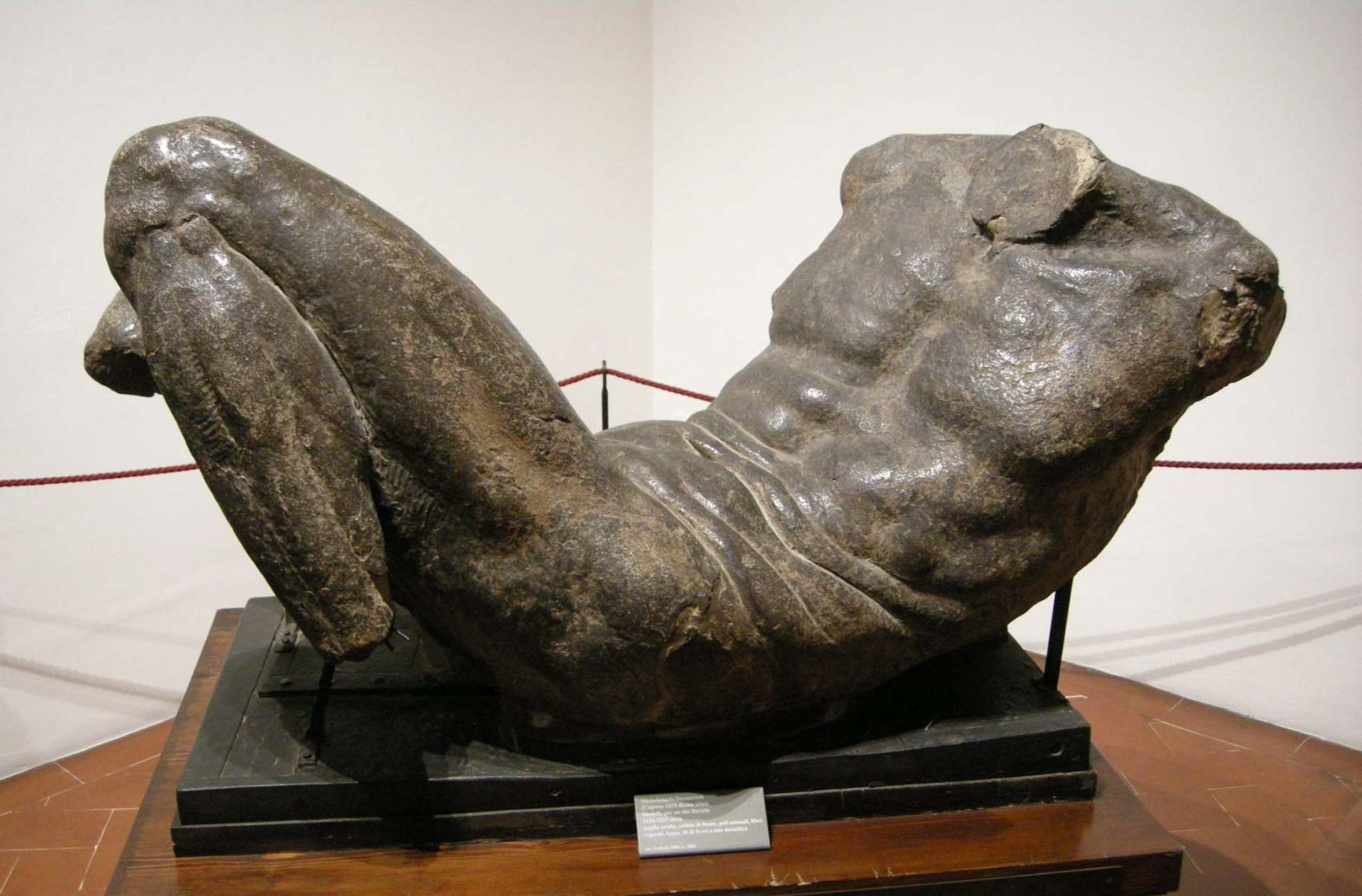
Michelangelo Buonarroti
“River God”
ca. 1524
“Having seen River God I realized there was a play in anatomy in that piece to achieve the gesture desired. So I went about posing and getting a few ideas to work from and felt the position I chose for the torso worked well for the model to hold and me to sculpt. I wasn’t looking to make a replica but my own idea about the body in this gesture. Technically, I tend to work from the core outwards so I can retain and allow forms the room to grow.
Every sculpture has its own challenge, in this piece it was about retaining the flexion of the hips whilst sculpting and choosing the right patina as I had veered from the traditional colors. I also love the beauty of the body. Coming from medicine, sculpture is one way of expressing my own interactions with all the emotions that pass through my door whilst practicing medicine. This piece is special as its the 2nd in a collection of three pieces that will eventually work together in the entrance of a gallery. They are focussed on contrapposto and classical ageless sculptures.”
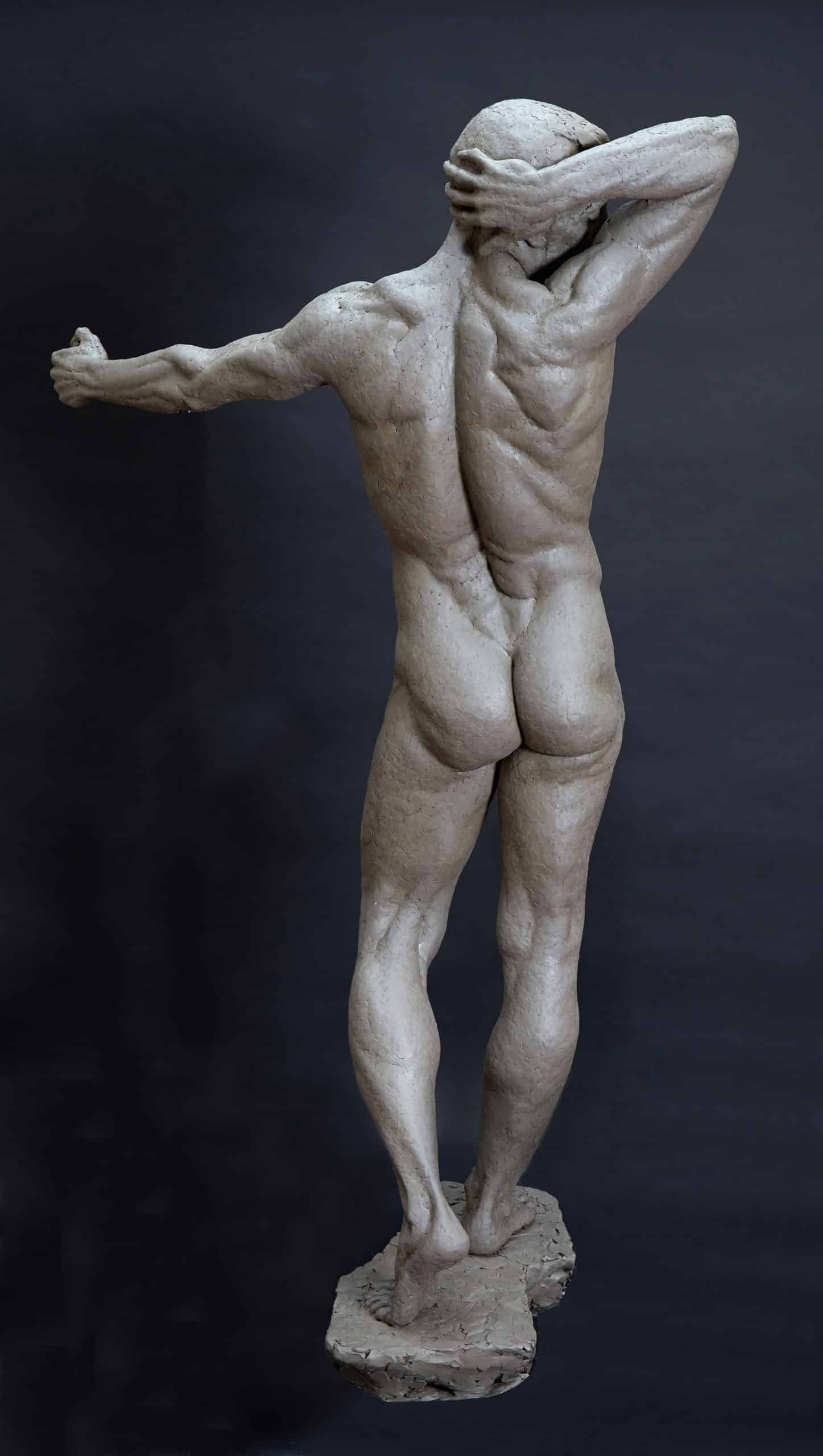
Back view of “Solitude”
Finished clay
H200 x W30 x D23 cm
2019
Finishing the Figure:
“Creating Solitude has been a long journey from sculpting in clay to a copper green patina that developed some disease to re-patina in dark brown to grey with a tinge of green.
Finally, when the finished sculpture arrived back to the studio, I played a piece of music which I heard while walking in a street in Rome at dusk. When I first heard the music it was so pulling I opened the doors to a lovely church orchestra, I was so moved that I stayed until the end. In this sculpture the model could be looking at himself or could be a viewer. I fortunately had the video of the Roman orchestra playing and the experience of observing the artwork with the music was quite emotional, detached as a third party and then seeing it as the creator. It was something precious I cannot express in words. Some things are just felt.”
Anil standing next to
his finished sculpture,
“Solitude”
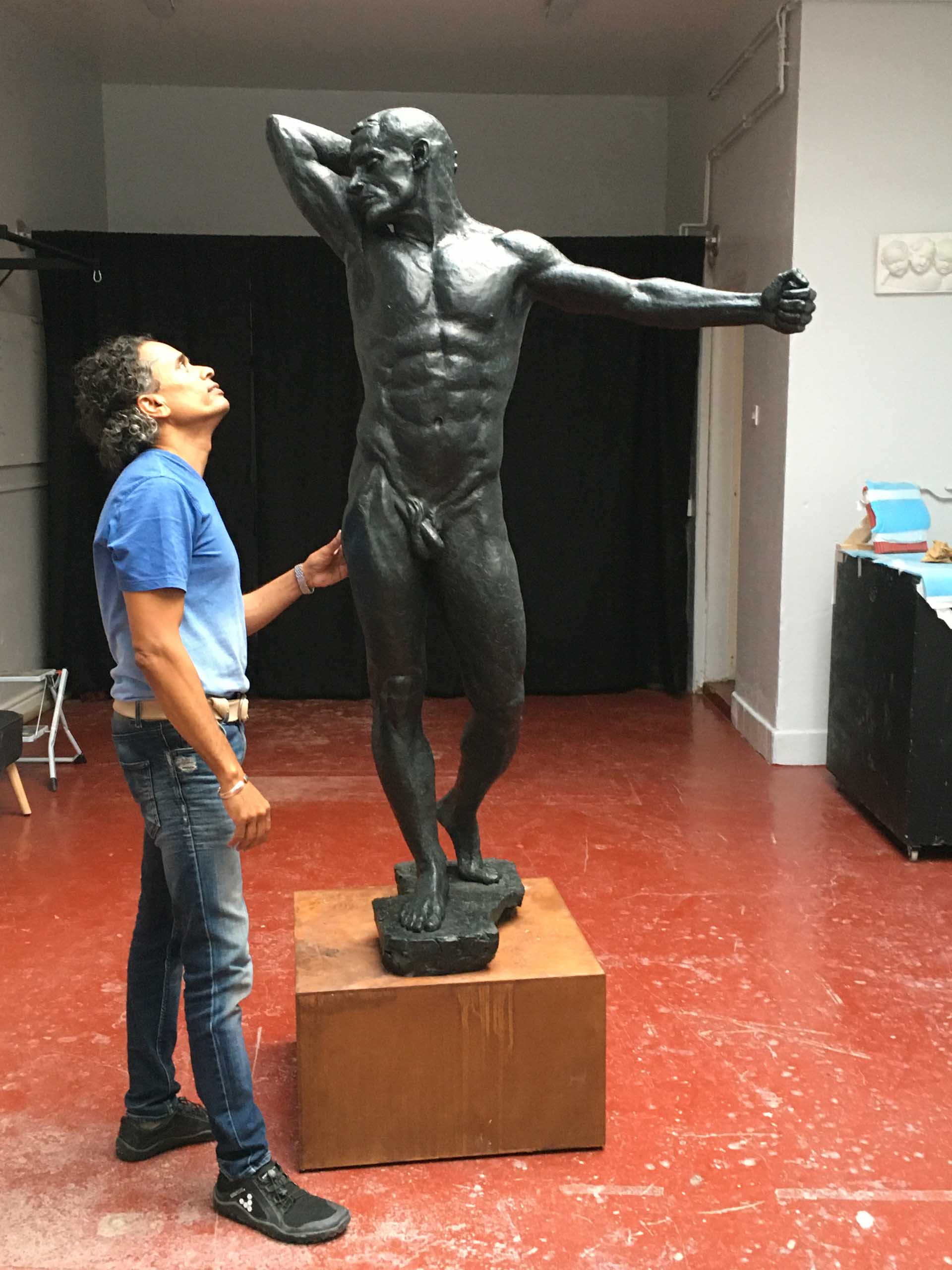
Anil standing next to
his finished sculpture,
“Solitude”
“This piece is close to my heart as it represents hope beauty strength in adversity and as my first life-size piece finished in bronze. The sculpture also shows determination when there is calamity around or to be in a equanimous state of mind.”
– Anil Surendran
Solitude was a finalist in the 15th Art Renewal Center Salon 2021.
More about Anil Surendran
I sculpt in the classical realist tradition. I graduated from The Florence Academy of Art from the Sculpture program, receiving a three-year specialist certificate in a focus on classical drawing techniques in charcoal and classical figurative sculpture in the tradition of the old masters.
Prior to studying at the FAA I spent about 8 years attending various workshops around the world and learning the essential skills from some of the best. I had always been attracted to Greek, Roman, and ancient Indian sculptures. I felt I needed to learn more and enrolled in finishing school in Florence.
My work is about life and humanity in its richness. Sculpture is a bridge that connects me to my forefathers and lets me glimpse the future. I am inspired by the old masters and the nameless artists who toiled in creating sculptures dotted around Asia.
My other job as a medical doctor gives me a good insight into emotions at play and a sound understanding of anatomy. It helps me understand the human body in various states, famine to excess, despair to ecstasy. As a sculptor, anatomy is essential and it’s vital for me to understand the variations on offer before representing them. It’s always a struggle of how much to let go and how much to represent.
Sculpture gives me an opportunity to reflect on the journey of the human species, its interaction with the divine earth and living beings. The opportunity to represent the energy that’s been loaned to me in my finite physical form.



